BIOFerm Energy Systems
Pressure Swing Adsorption (PSA)
︎
Engineering / CAD Drafting
Brief:
I was responsibe for drafting Piping and Instrumentation Diagrams (P&IDs), Process Flow Diagrams (PFDs), and Conduit Cutout site plans fir BIOFerm’s Pressure Swing Adsorption Systems.
BIOFerm’s gas upgrading plants utilize PSA technology to source raw biogas from landfills, municipalities, wastewater treatment plants, and agricultural operations to create high-value renewable natural gas. That gas can then be used as clean fuel in the form of compressed natural gas and liquified natural gas that is injected into the natural gas grid.
Timeline:
4 months
Pressure Swing Adsorption (PSA)
︎
Engineering / CAD Drafting
Brief:
I was responsibe for drafting Piping and Instrumentation Diagrams (P&IDs), Process Flow Diagrams (PFDs), and Conduit Cutout site plans fir BIOFerm’s Pressure Swing Adsorption Systems.
BIOFerm’s gas upgrading plants utilize PSA technology to source raw biogas from landfills, municipalities, wastewater treatment plants, and agricultural operations to create high-value renewable natural gas. That gas can then be used as clean fuel in the form of compressed natural gas and liquified natural gas that is injected into the natural gas grid.
Timeline:
4 months
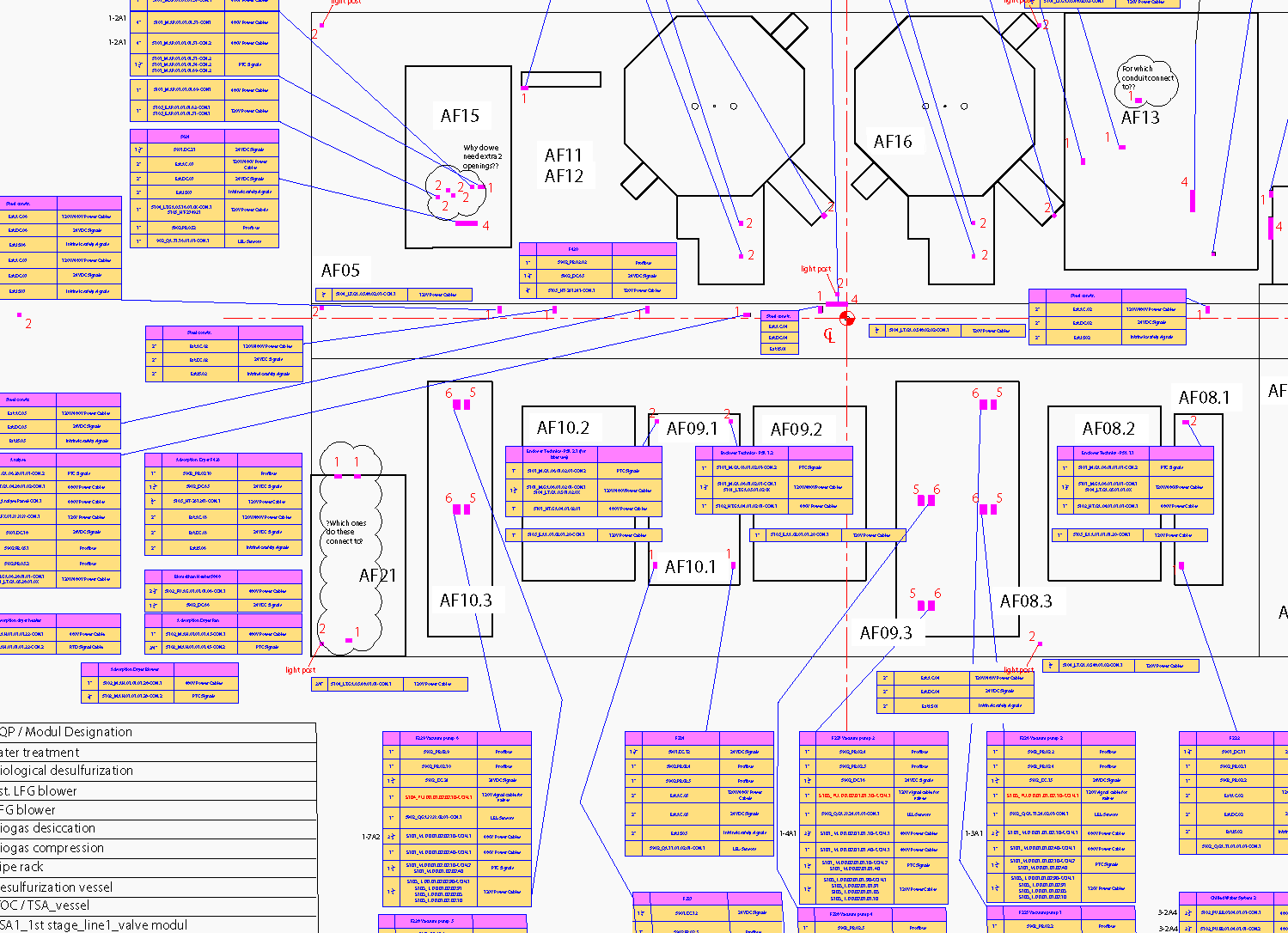
Microsoft
Whistl
Interspecies communication —augmented by machine learning
Sponsored by:
Microsoft Design
Team :
Emma Boyle
Prompt
Dogs are special. They perform in high-risk situations and save lives in the public and private sector daily. We were asked to create a blue-sky solution for an animal-related problem using Microsoft’s design language and machine learning capabilities. Interested in the relationship between human and canine, we focused on how machine learning and AI could help dogs do a better job helping humans.
Solution
How can we help them do a better job? The problem is, dogs already do a great job. We found that the problem isn’t what dogs are lacking, but what handlers are lacking in understanding them.
Whistl is an ai enabled wearable that uses Microsoft’s machine learning to the actively interpret the body language, and other signifiers of detection dogs to help new handlers better understand their partners.
Conservation Canines
Nestled a the base of Washington’s Mt. Rainier, shelter dogs deemed unfit for families are rescued and trained to locate a wide range of animal scat and scents. Scat detection dogs aid in quickly locating samples from different species across large, remote areas with their handler. These dogs minimize sampling bias that is present in other wilflife detection methods (remote cameras, radio-collaring, hair snags, and trapping). Due to their natural abilities to locate scents, no other method can aquire such a vast amount of reliable information in as short a time. Hear it from them:
“We have worked in sub-zero temperatures in deep snow, the blazing heat of Africa, the rain forest of Mexico, the steep mountain terrain of the Pyrenees, and even from the bow of a boat on the ocean. We have trained our dogs to find elusive predators, endangered mice, caterpillar frass that is virtually undetectable by the human eye, and eggs buried four feet below the sand.”
– Conservation Canines

Research
Meet the experts
︎
Barb Davenport
Master Canine Trainer,
Washington Dept of Corrections
Barb Davenport
Master Canine Trainer,
Washington Dept of Corrections
︎
Steve White
Supervisor,
Seattle PD Canine Unit
Steve White
Supervisor,
Seattle PD Canine Unit
︎
Heath Smith
Director of Field Operations, Conservation Canines
Heath Smith
Director of Field Operations, Conservation Canines
Our research focused on unpacking the intricacies of the canine & handler relationship: How it’s forged, what friction points arise, and how that bond can be stronger.
I spoke with Sergeant Barb Davenport and Heath Smith, key contributors to the foundation and success of Conservation Canines.
I spoke with Sergeant Barb Davenport and Heath Smith, key contributors to the foundation and success of Conservation Canines.
The biggest takeaways were:
A handler’s deep understanding of their canine’s body language and signals is crucial to successful tracking.
Handlers have a large learning curve understanding their canine’s non-verbal communication than vice-versa.
Each dog is an individual and responds to different stimuli and expresses themselves differently.
“It takes a couple days to train a dog.
It takes 3 months to train a handler. Even then it takes a few years to get it right.“
— Heath Smith, Conservation Canines
Problem
Design Goals
Ideation and Prototyping
Initial Ideation focused on capabilities of an on-body data hub that acted as a storate device for handler’s research tracking.
What is machine learning?
Machine learning enables computers to learn
from data and experiences and to act
without being explicitly programmed.
Build artificial intelligence (AI) applications that sense, process,
and act on information—augmenting human capabilities,
increasing speed and efficiency, and helping you achieve more.
How can we strengthen the level of understanding between handler and canine in a non-invasive way?
- Supporting (not replacing) the canine/handler relation
-
Small footprint, “set and forget”
- Durable
- Stay true to Microsoft’s design principles
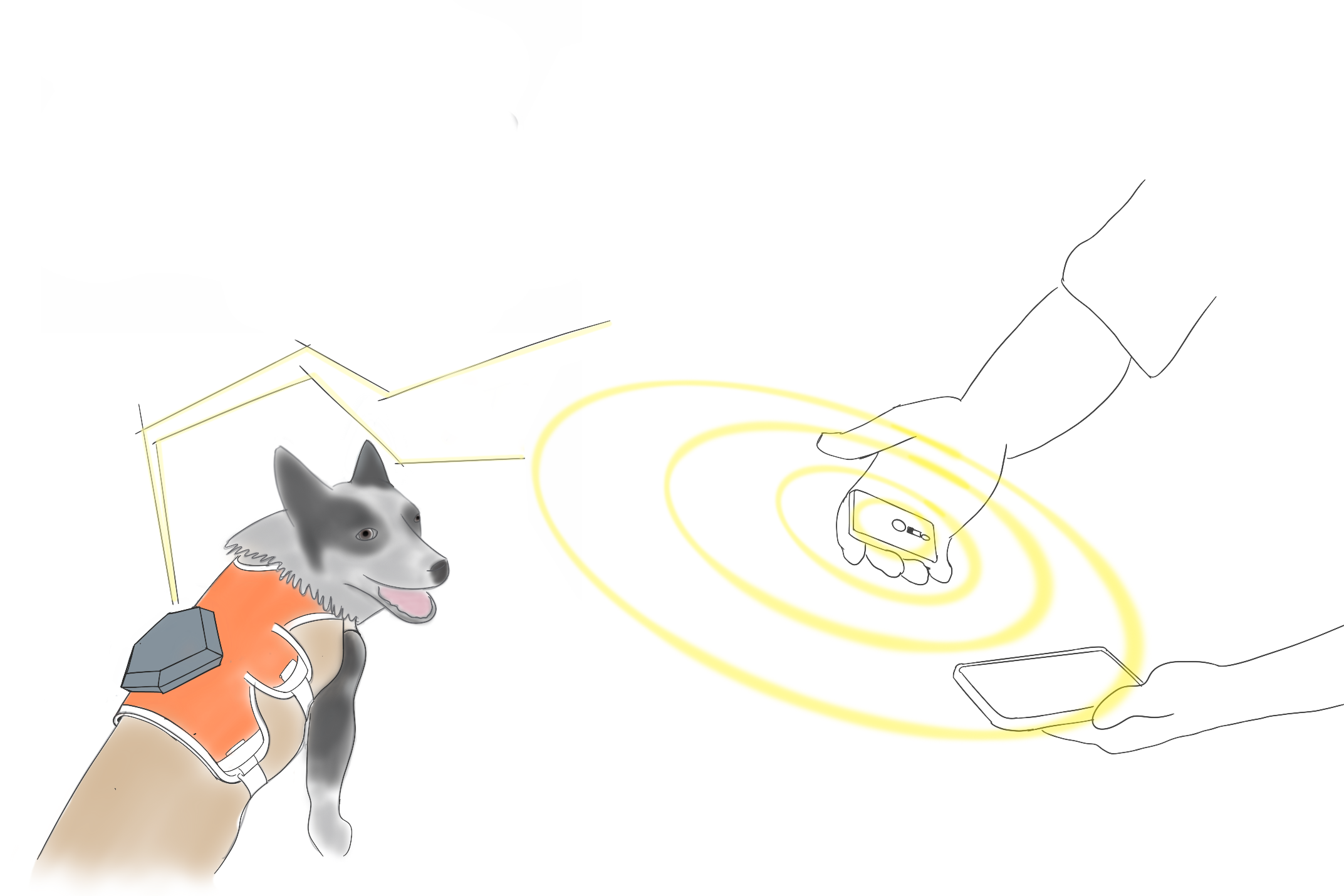

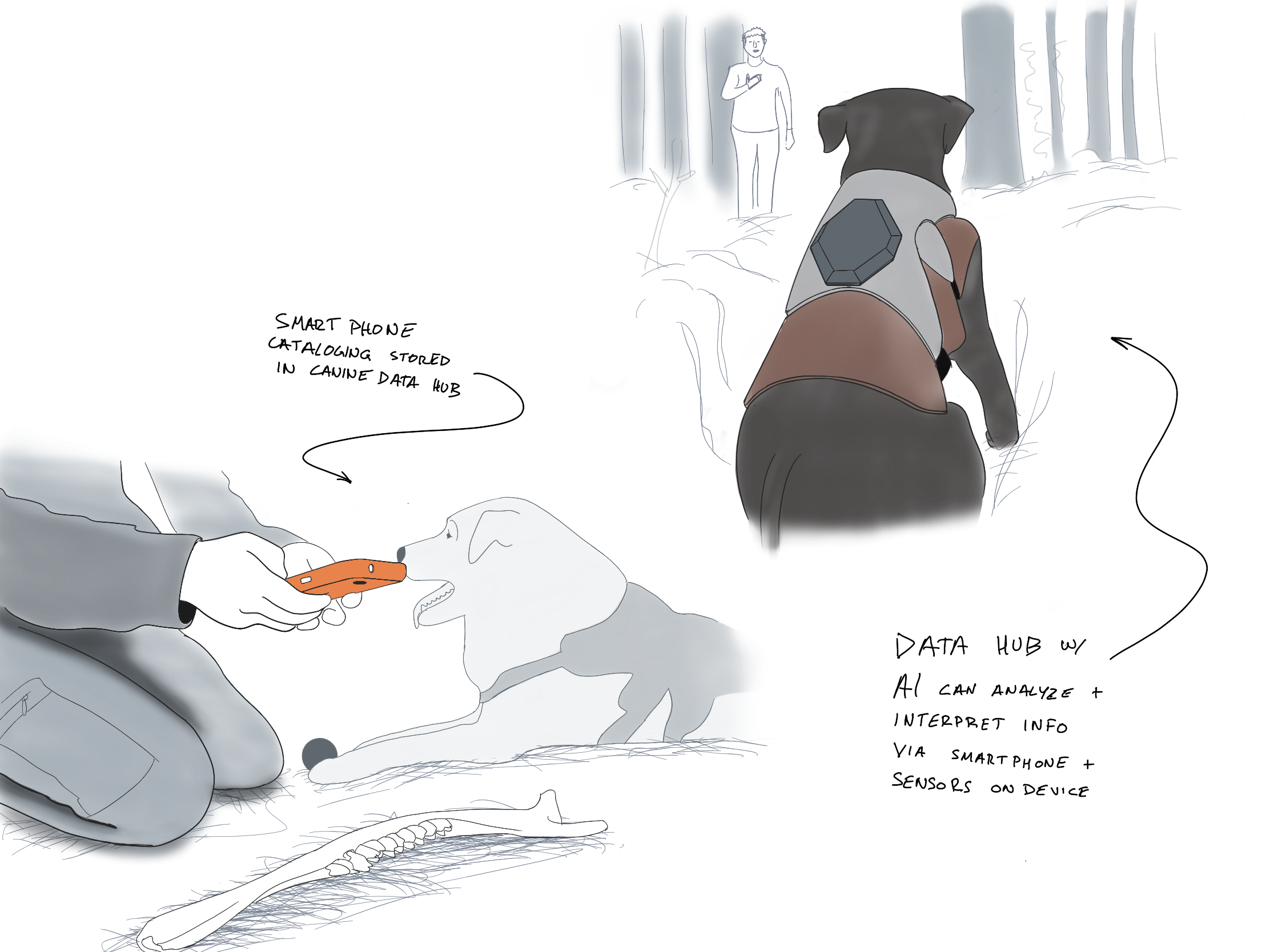

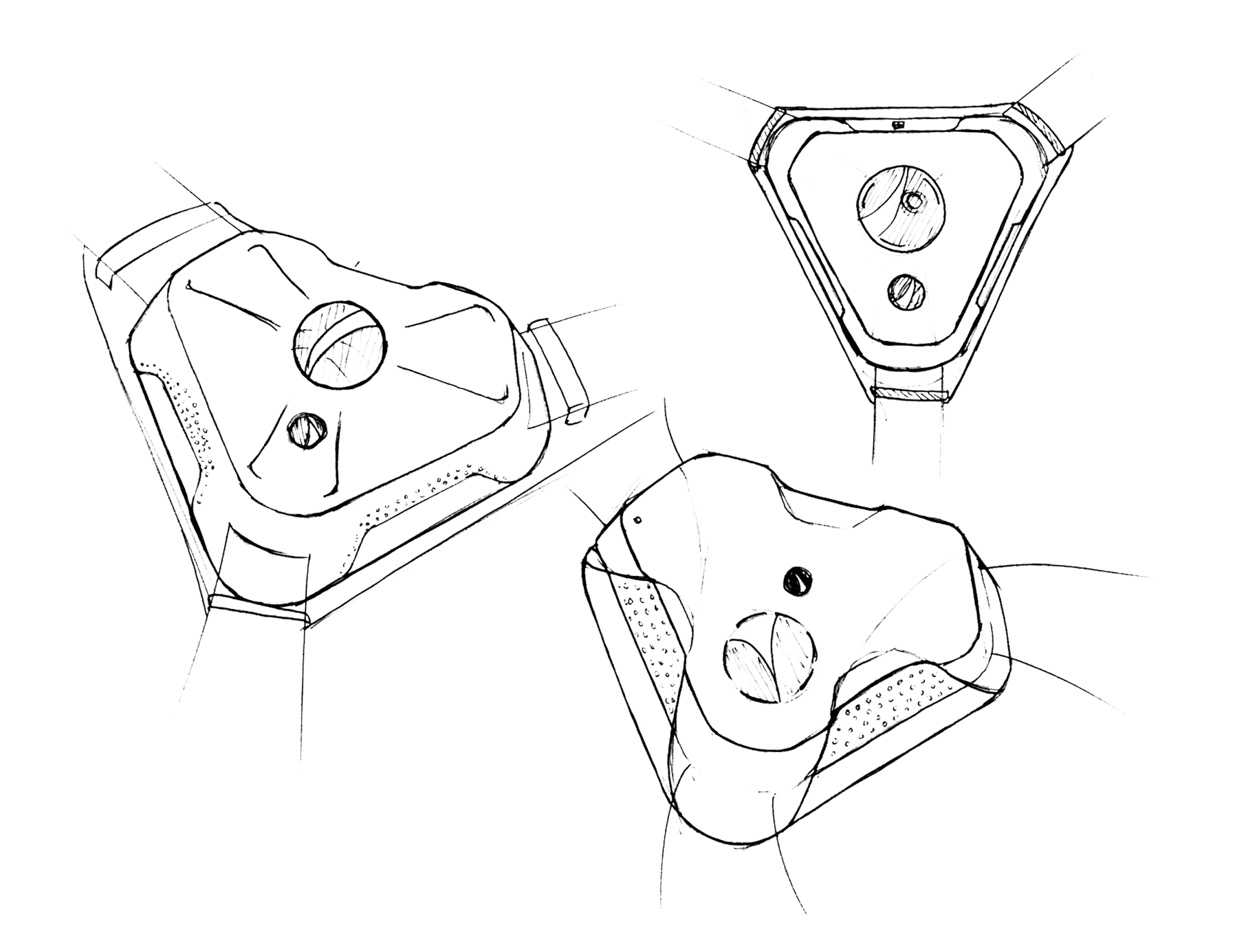


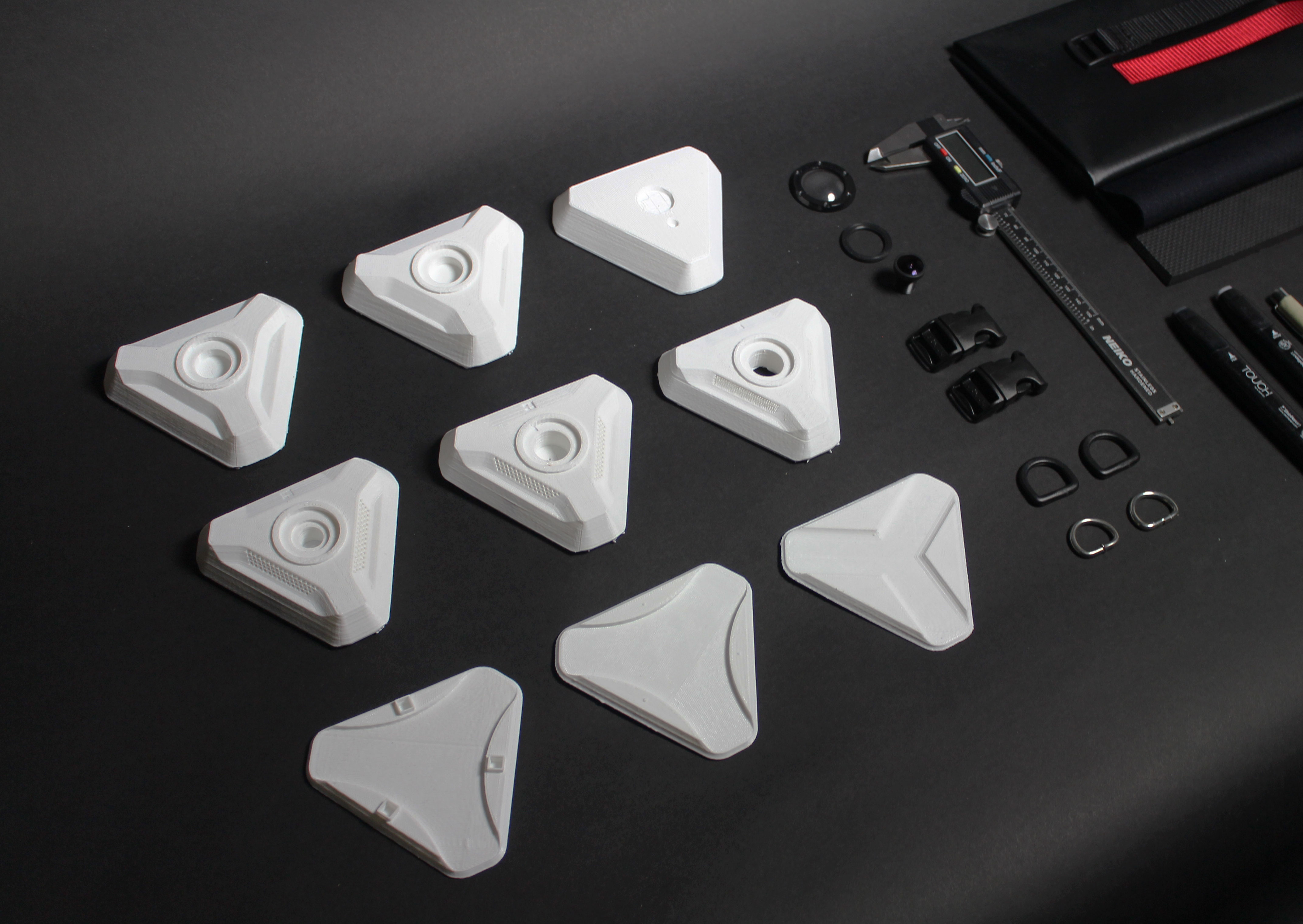
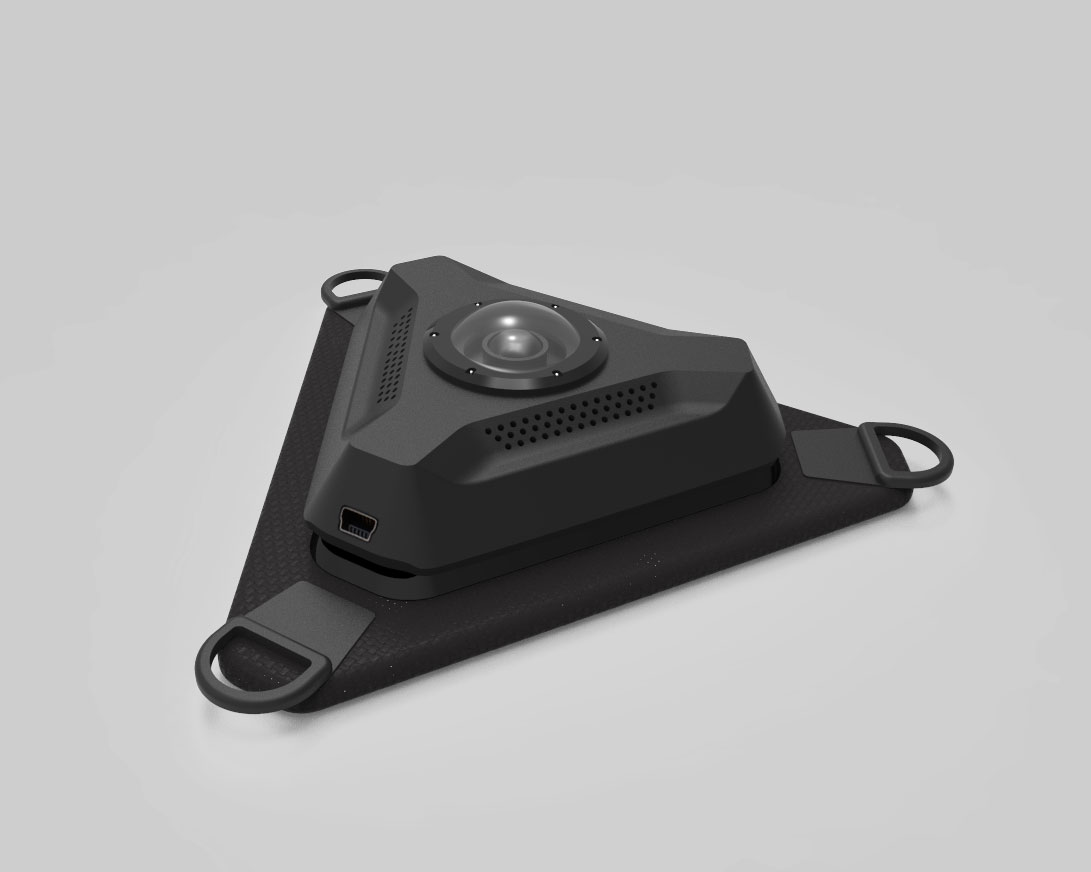

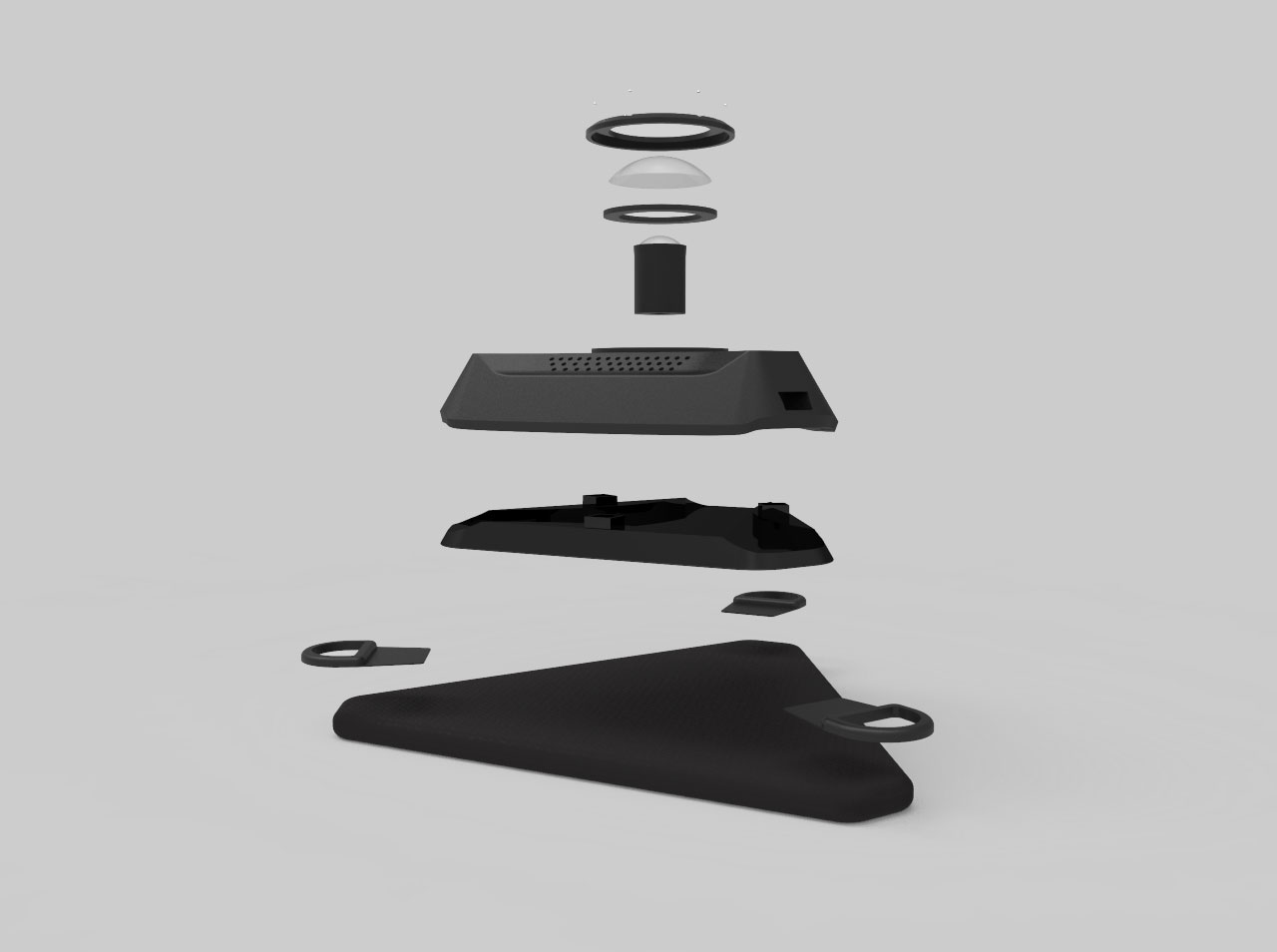

Photos of Conservation Canines are owned by Jaymi Heimbuch LLC
︎ Projects
In collaboration with: TEAGUE Aviation
Read their blog post about us here
Team:
Nate Chang
Carly Cheng
Casey Gustafson
Ad Astra
A commercial spaceship cabin for the year 2030
In collaboration with: TEAGUE Aviation
Read their blog post about us here
Team:
Nate Chang
Carly Cheng
Casey Gustafson
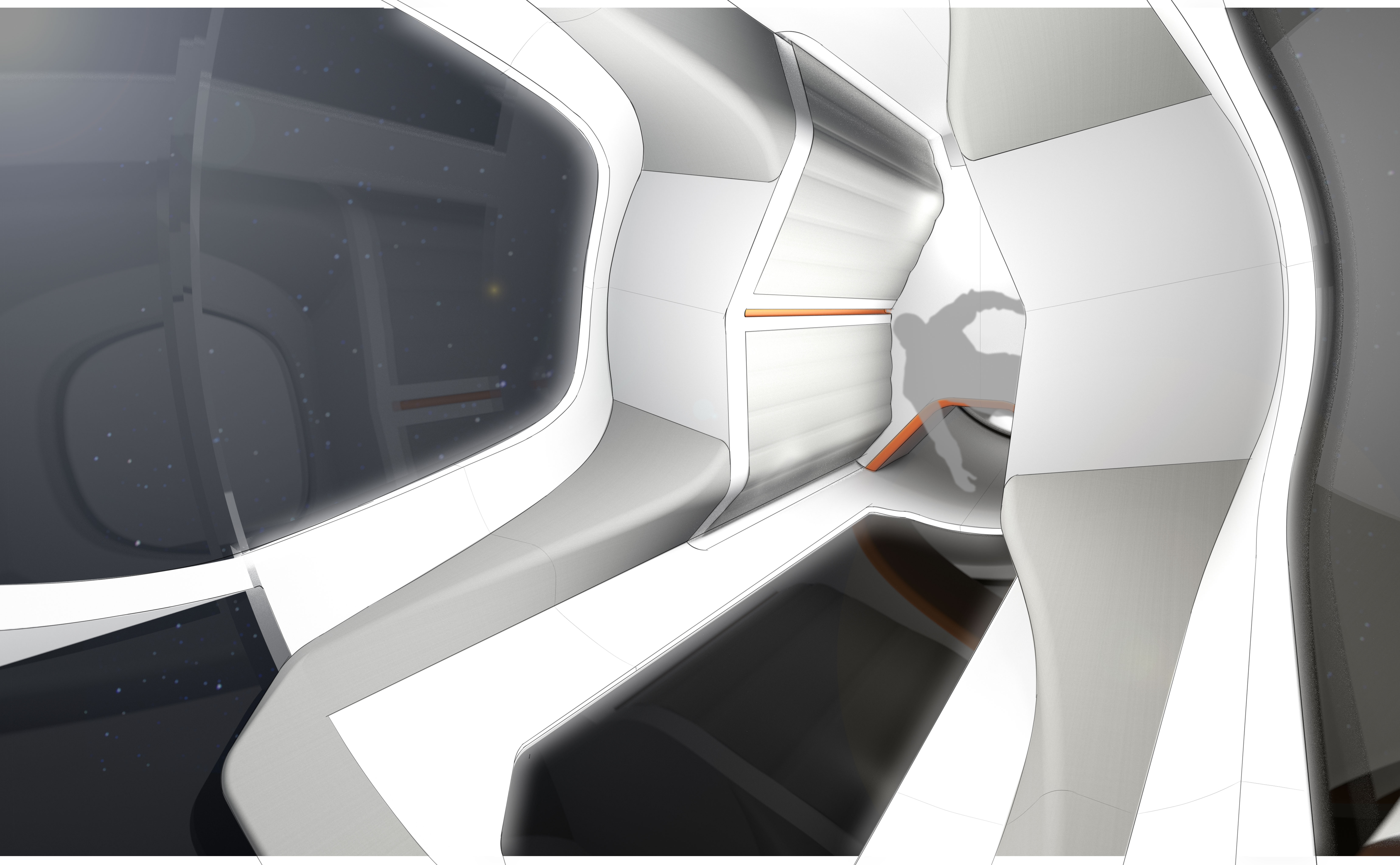
As the feasibility for space travel grows, so does its potential for new commercial experiences.
The TEAGUE Aviation studio asked our 4-person team to create a concept for the interior of a commercial spacecraft in the year 2030. With civilians instead of professional astronauts, this cabin needed to accommodate a different user with different needs and expectations.
The TEAGUE Aviation studio asked our 4-person team to create a concept for the interior of a commercial spacecraft in the year 2030. With civilians instead of professional astronauts, this cabin needed to accommodate a different user with different needs and expectations.
An 8-day journey from Low-Earth Orbit, around the Moon and back. A 4-passenger cabin with modular “soft-touch” dividers that allow for quick modifcation of the area, creating private and communal spaces easily.
8 days
3 crewmembers
4 passengers
8’ x 15’ cabin
239,000 miles
8 days
3 crewmembers
4 passengers
8’ x 15’ cabin
239,000 miles
How do you design for space— without being in space?
Listen to the experts.
Let their experiences and stories inform our focus.
Immersion studies, like prolonged confinement exercises and Zero-G Neutral Buoyancy tests, give us an understanding of our environmental constraints.
Immersion studies, like prolonged confinement exercises and Zero-G Neutral Buoyancy tests, give us an understanding of our environmental constraints.

Scott Kelly, Former US Astronaut
Microgravity + Circadian Dysrhythmia
(Lack of Sunset/Sunrise)
=
Disorientation + Fatigue
(Lack of Sunset/Sunrise)
=
Disorientation + Fatigue

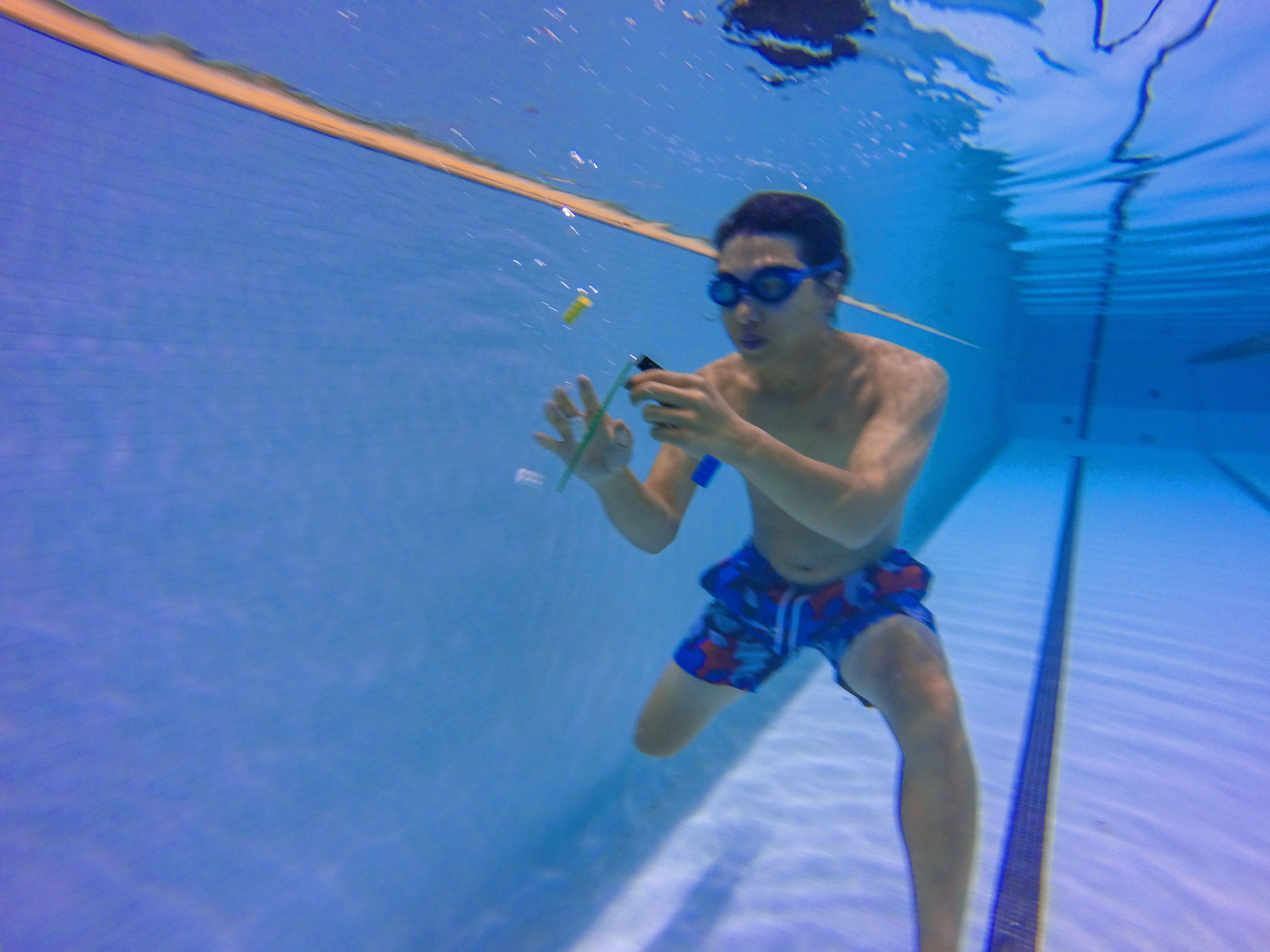
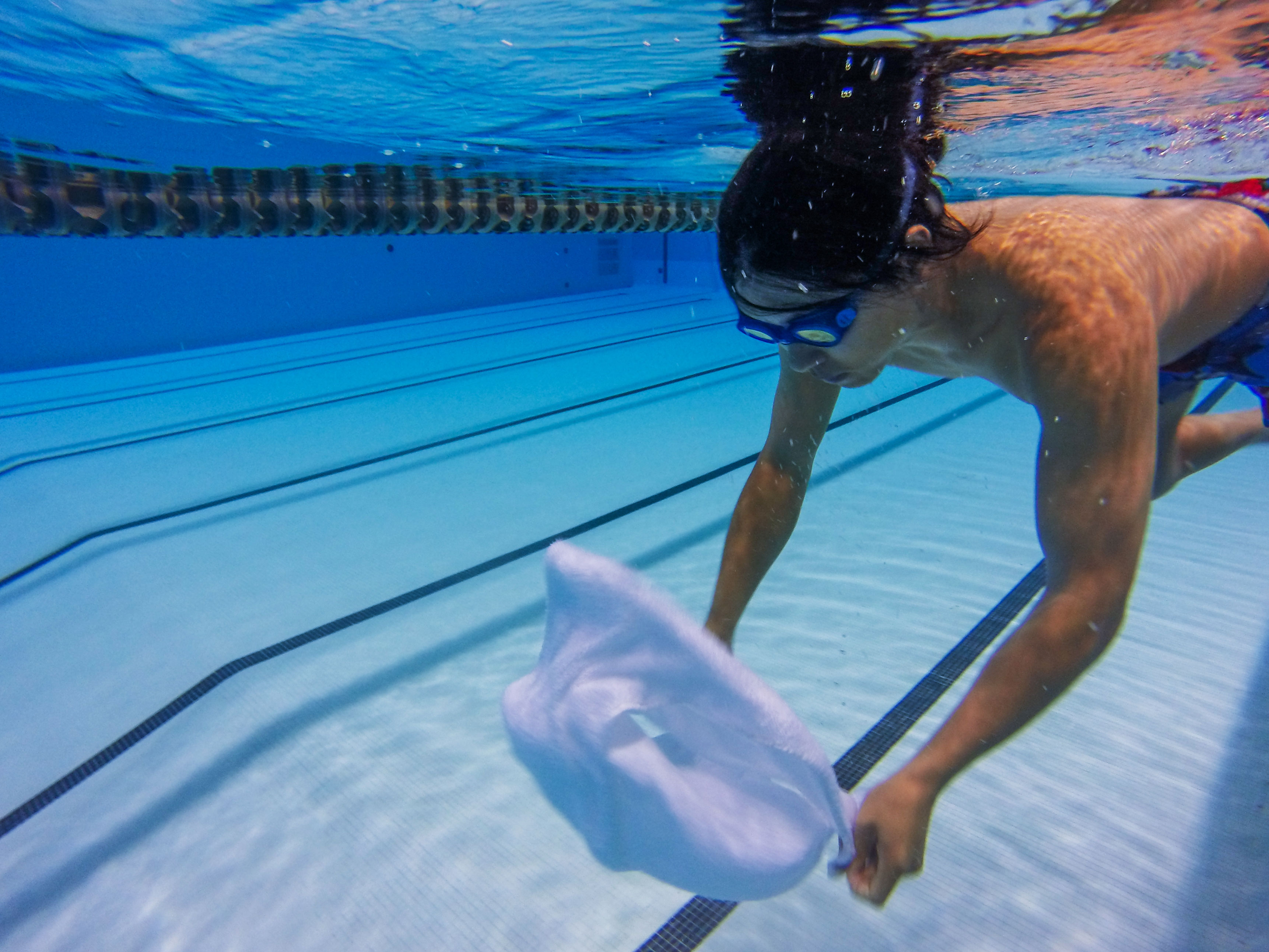
Rigid Environment
=
Social Friction + Physcological Stress
=
Social Friction + Physcological Stress



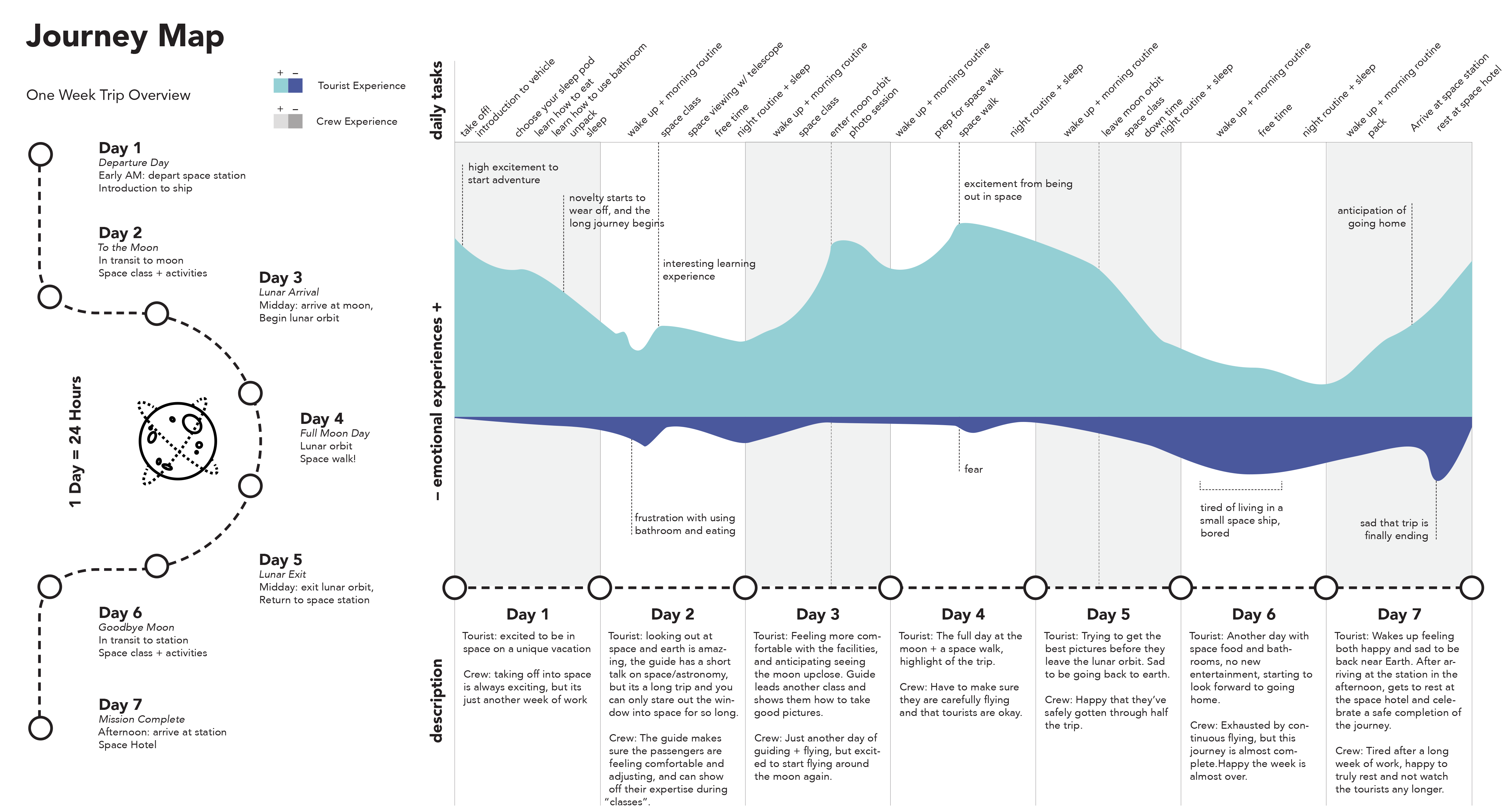
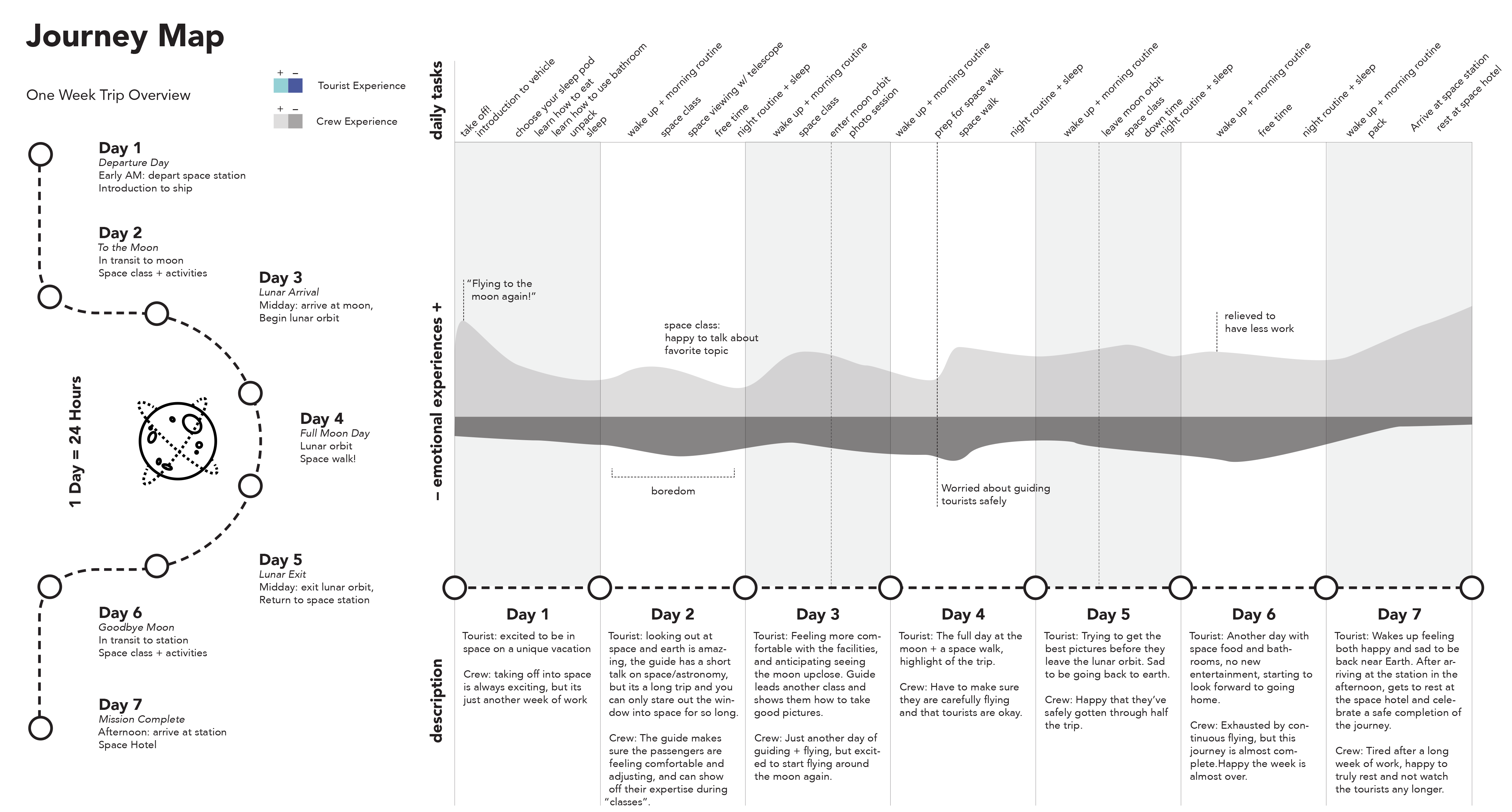
How can a spacecraft interior promote personal agency and social unity in a confined space?
︎Space Travel is Physically + Emotionally Demanding
︎Public and Private Space Nurtures Collective Harmony
︎Public and Private Space Nurtures Collective Harmony
Prototyping
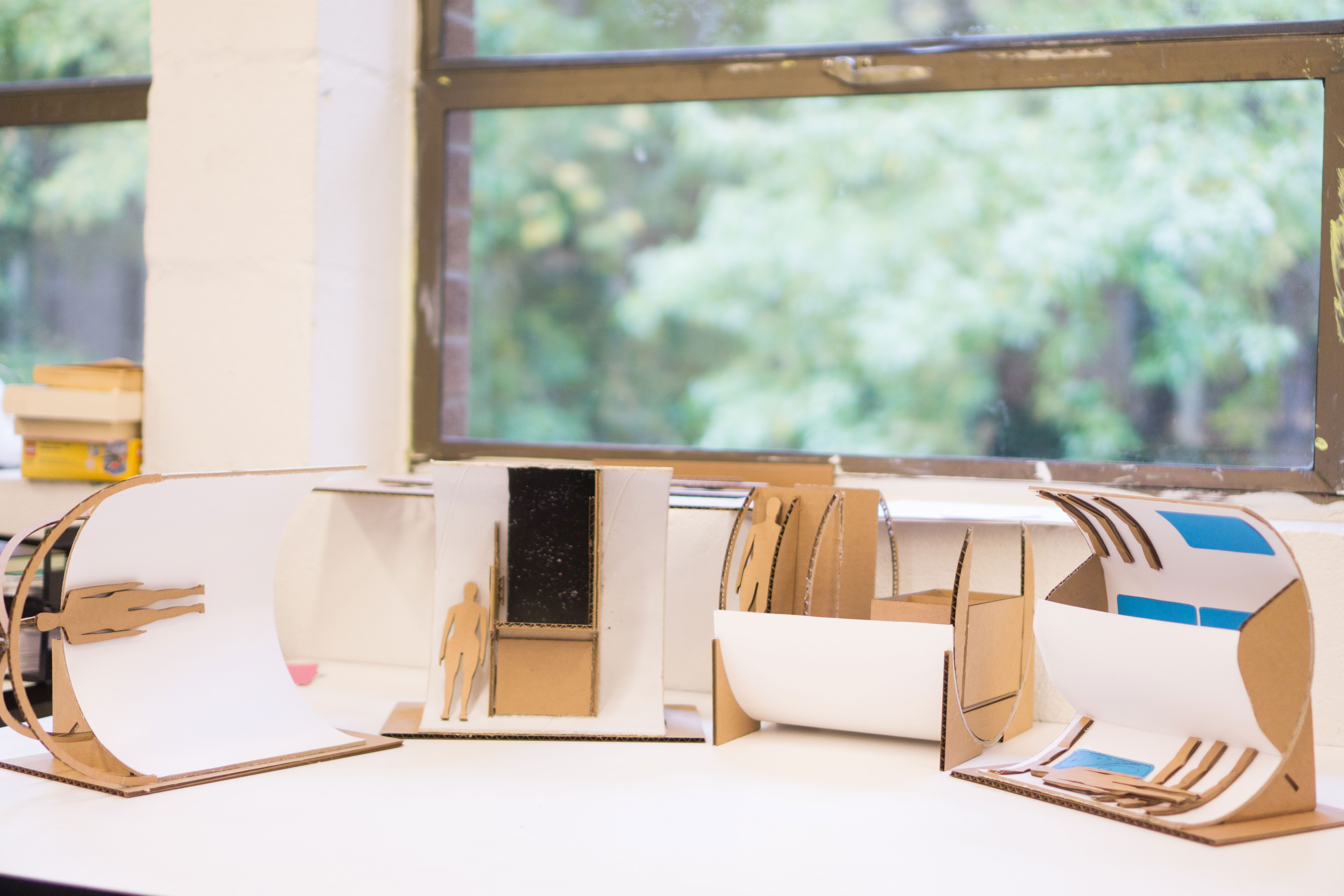
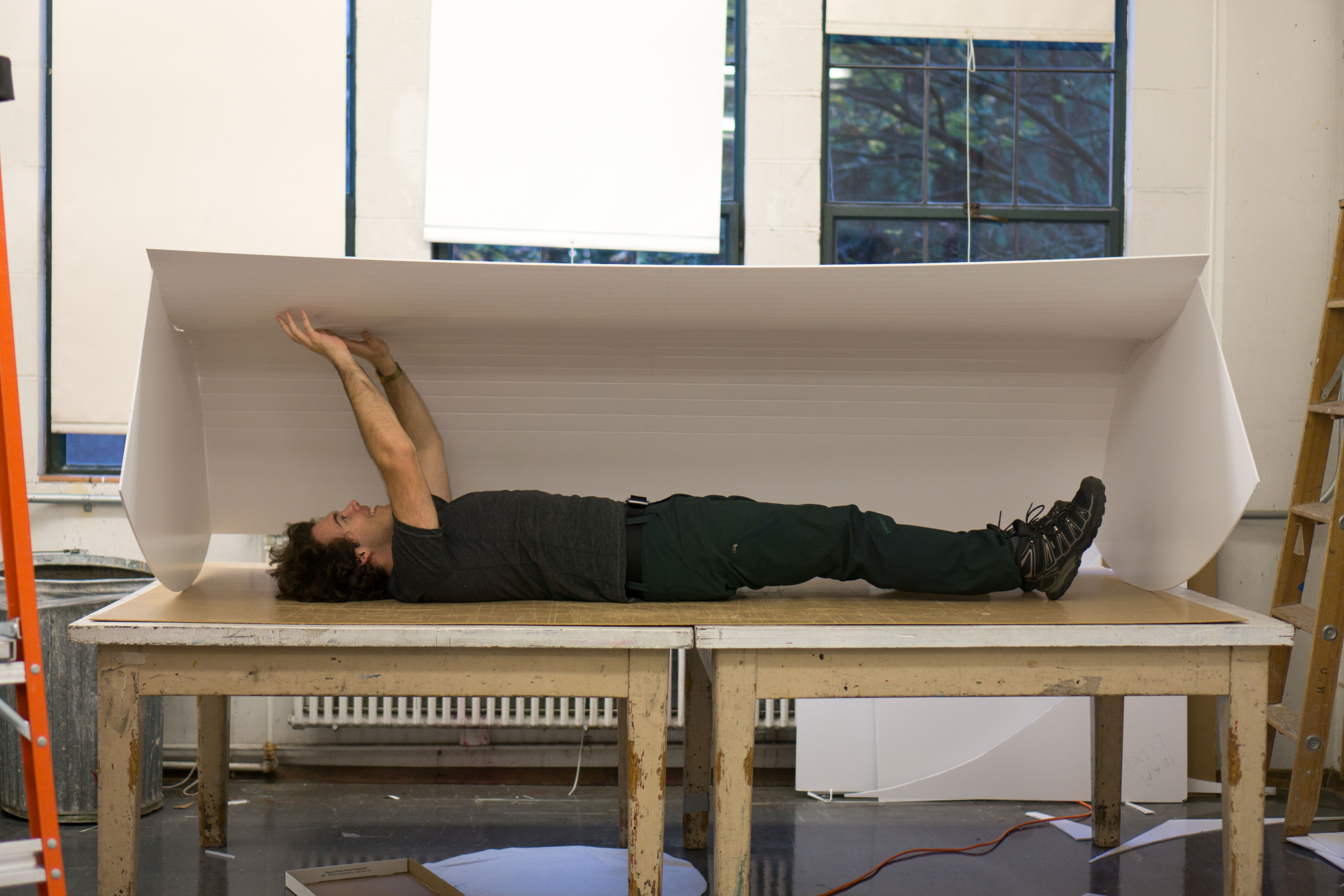


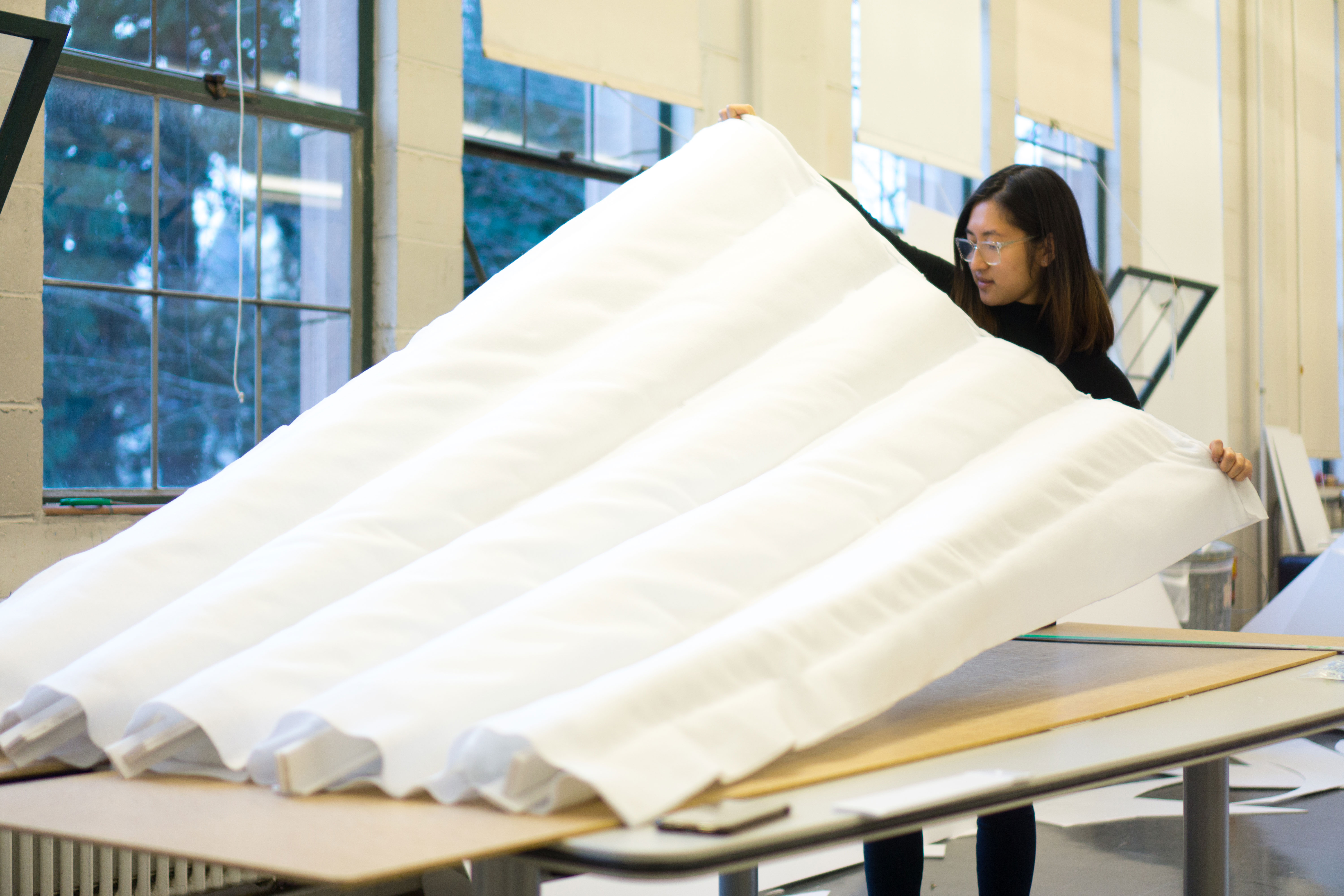
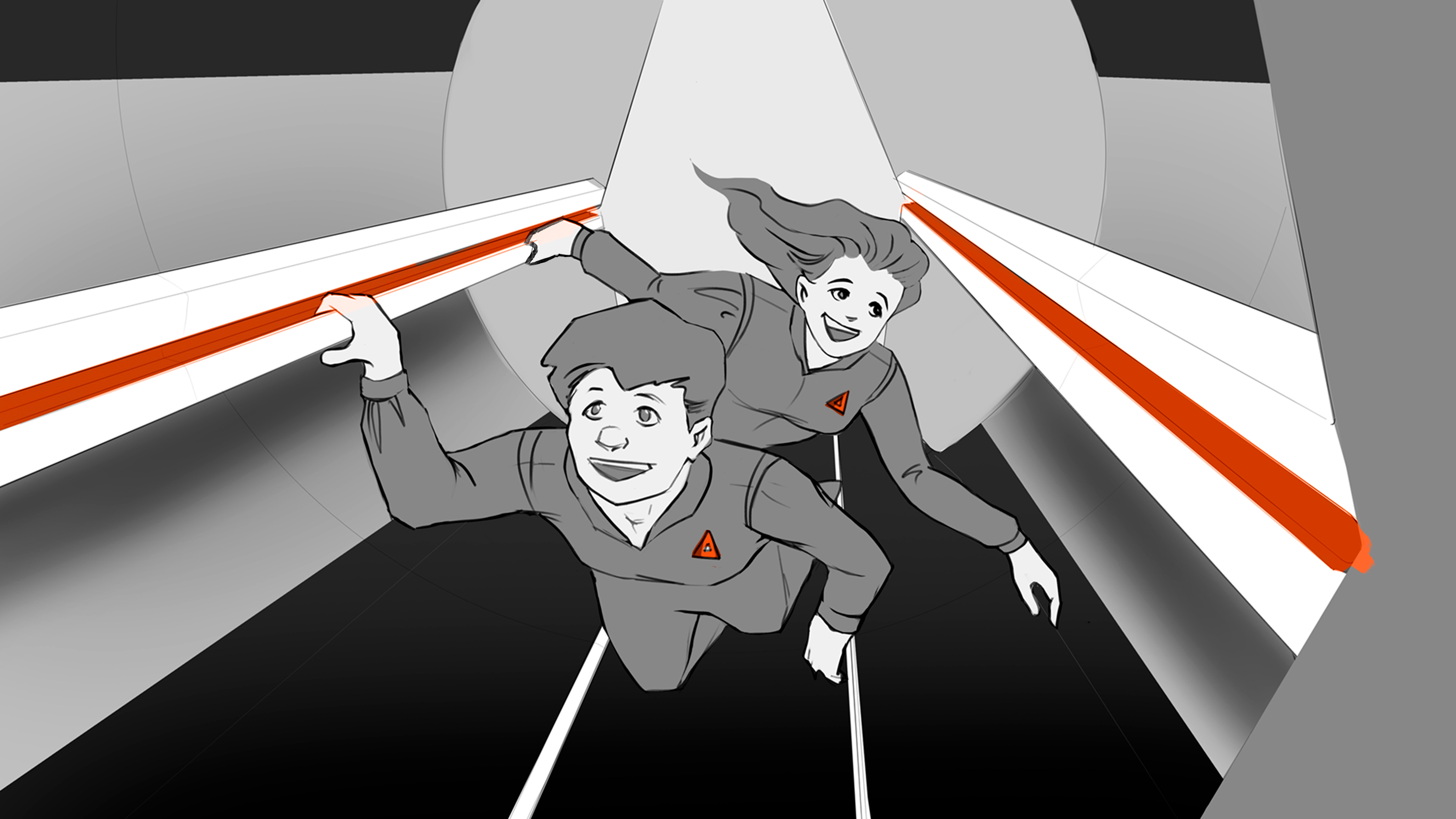

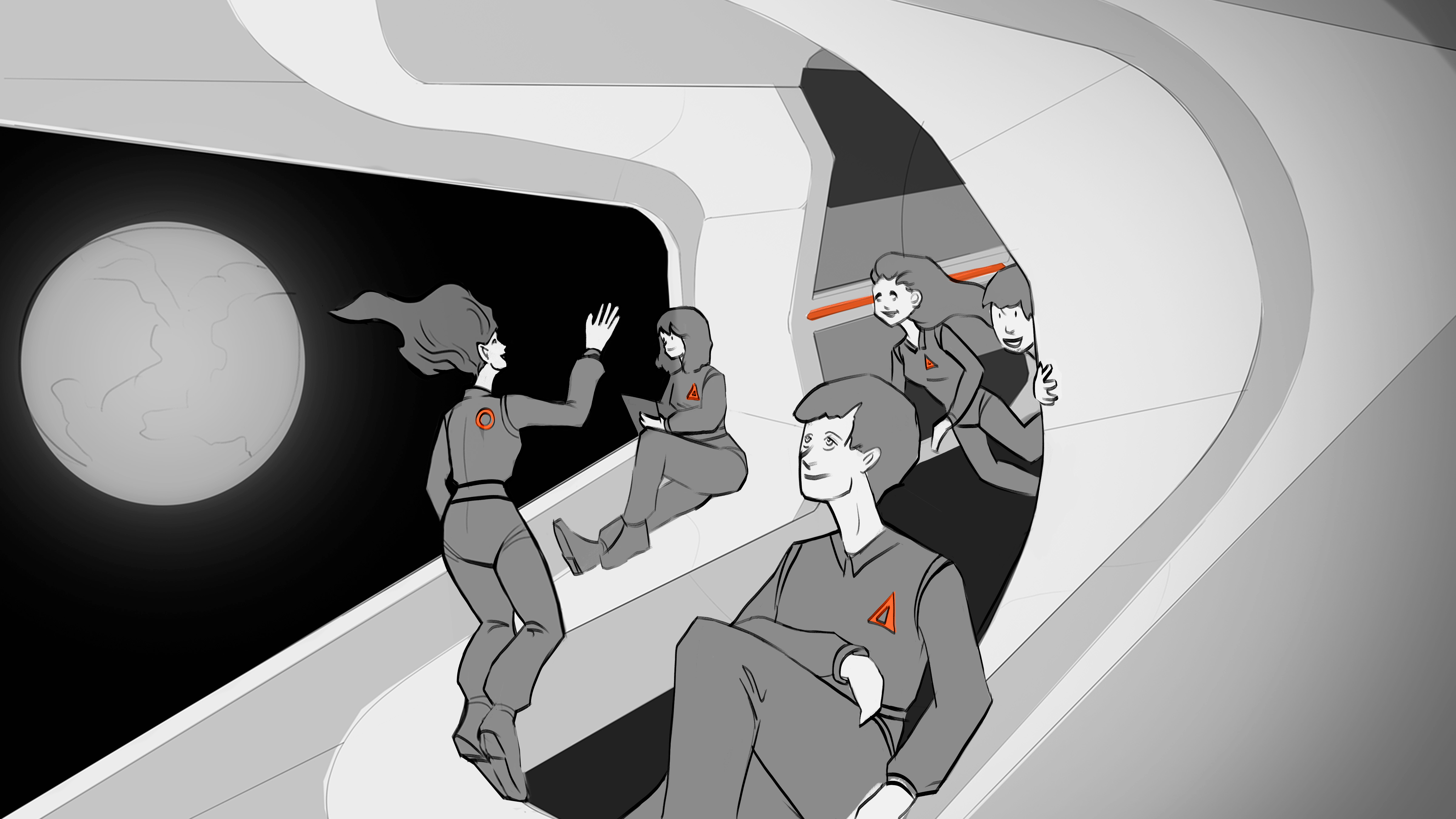
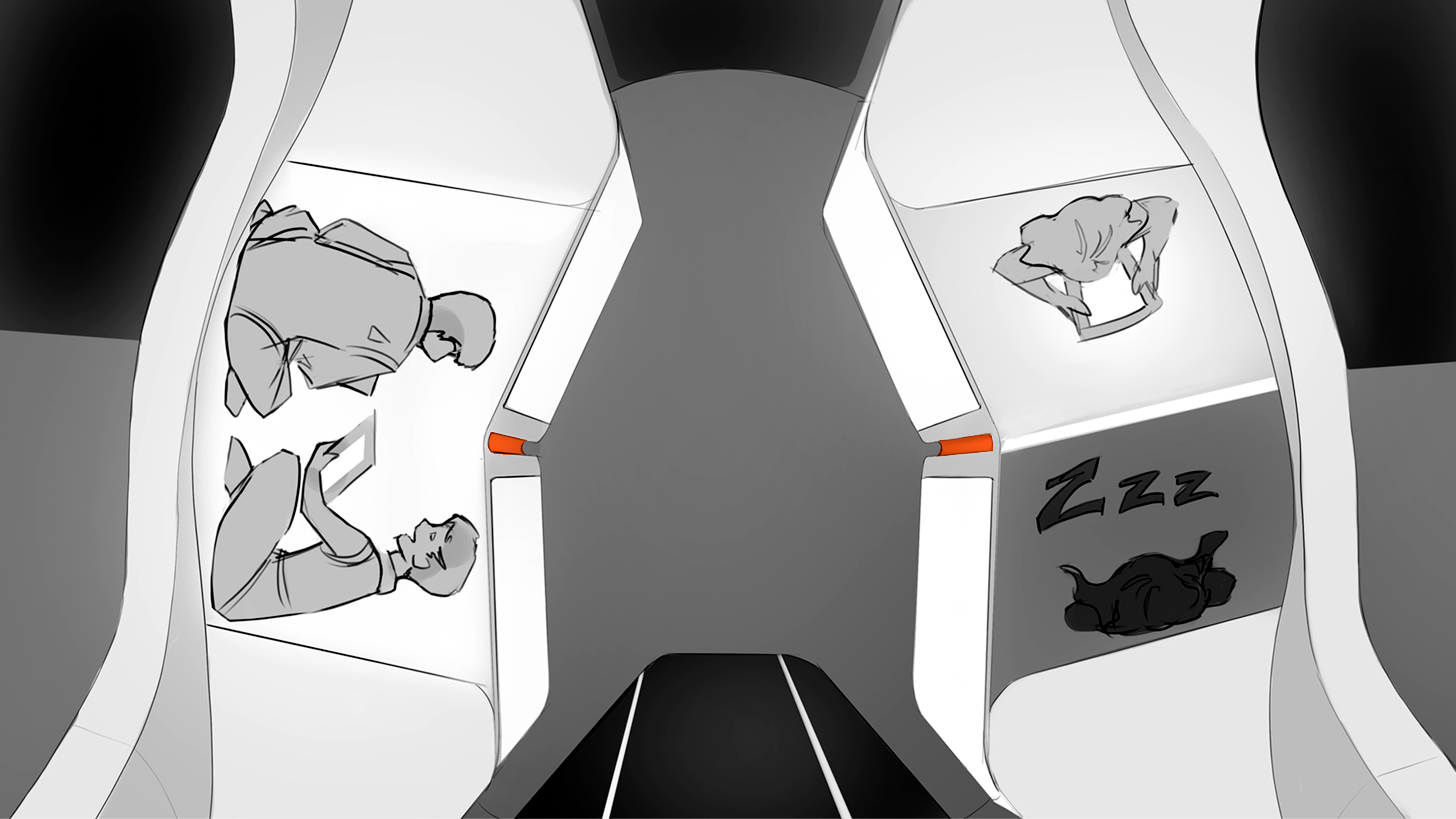



Whitestudy


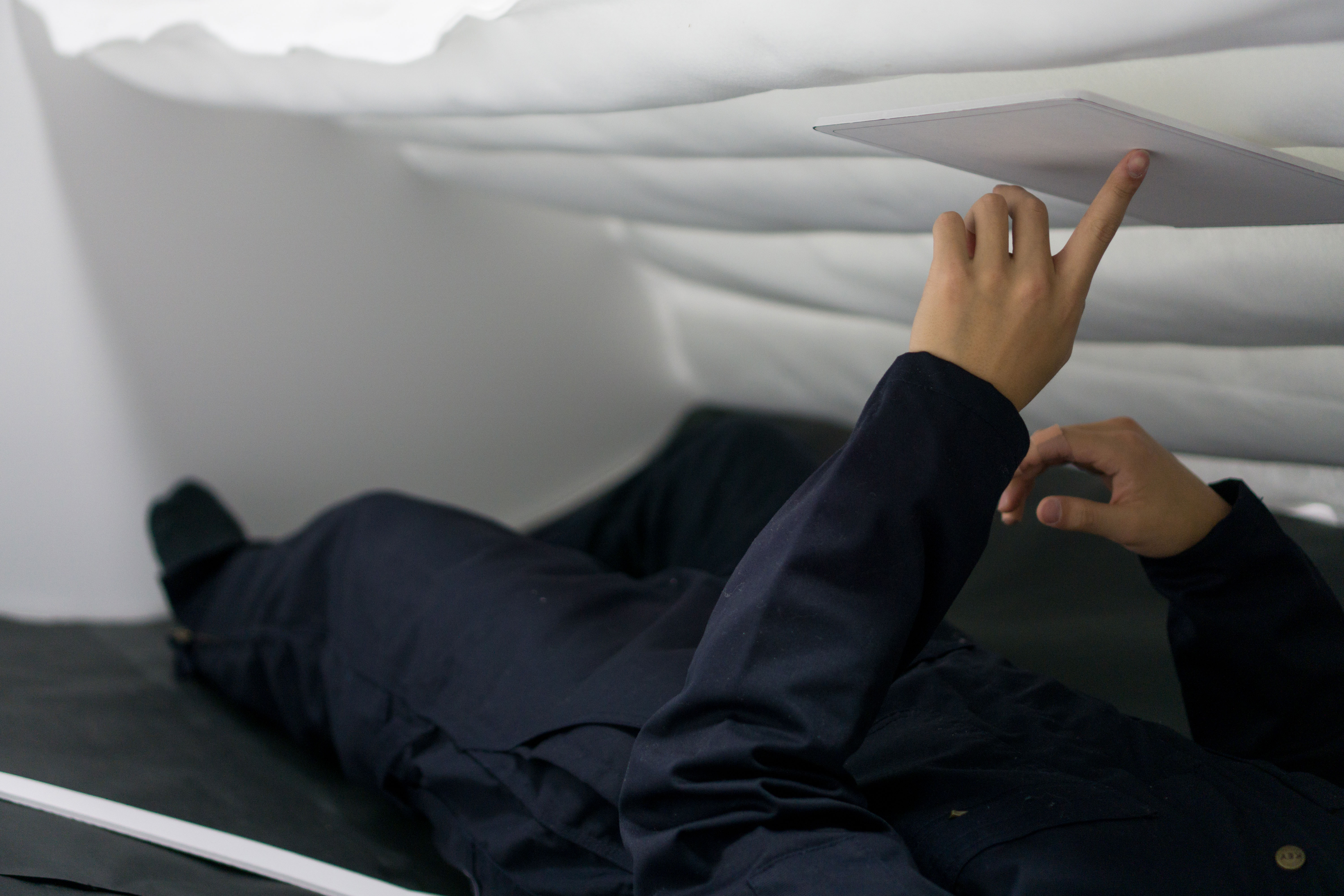
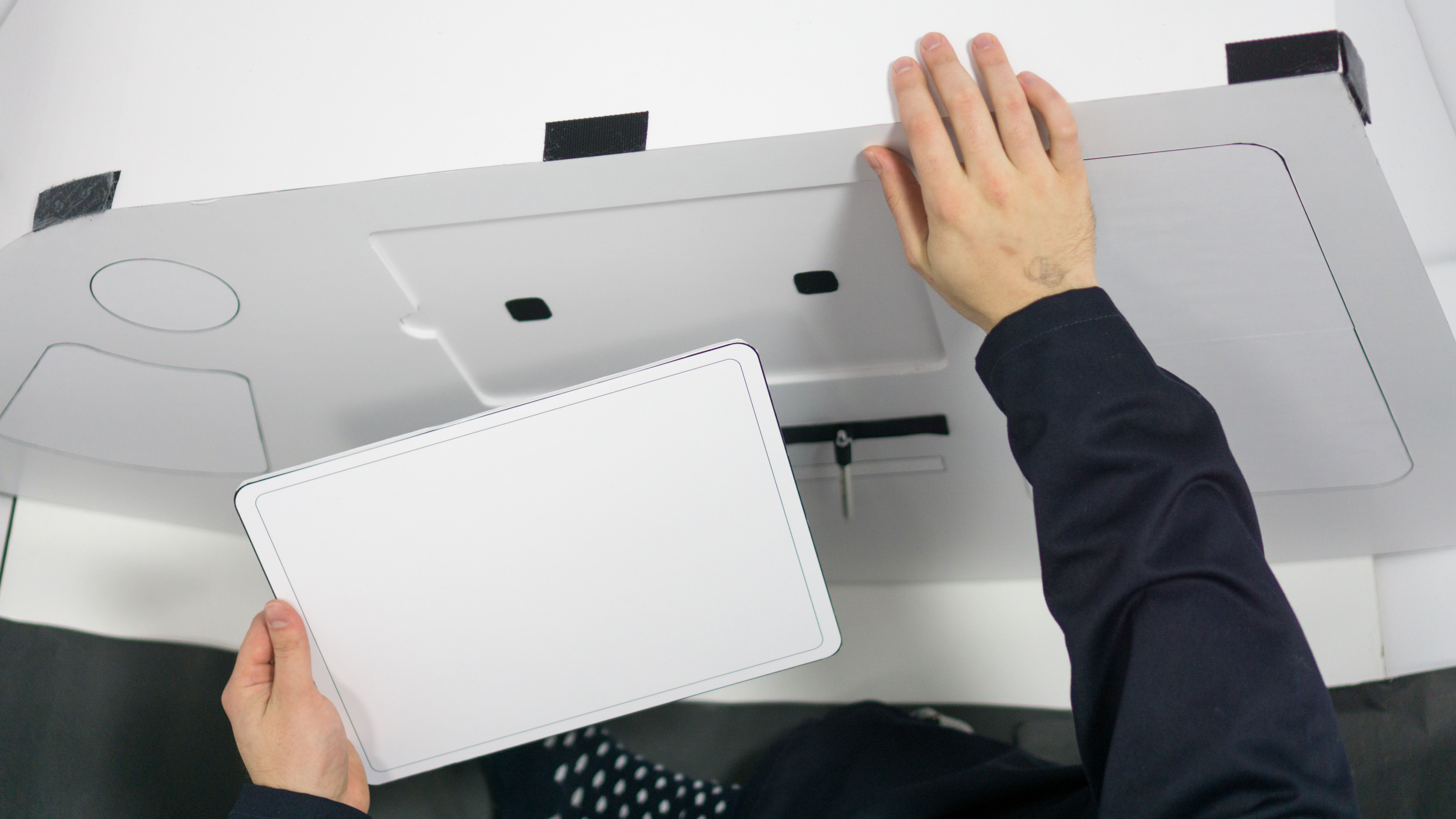

This is Ad Astra
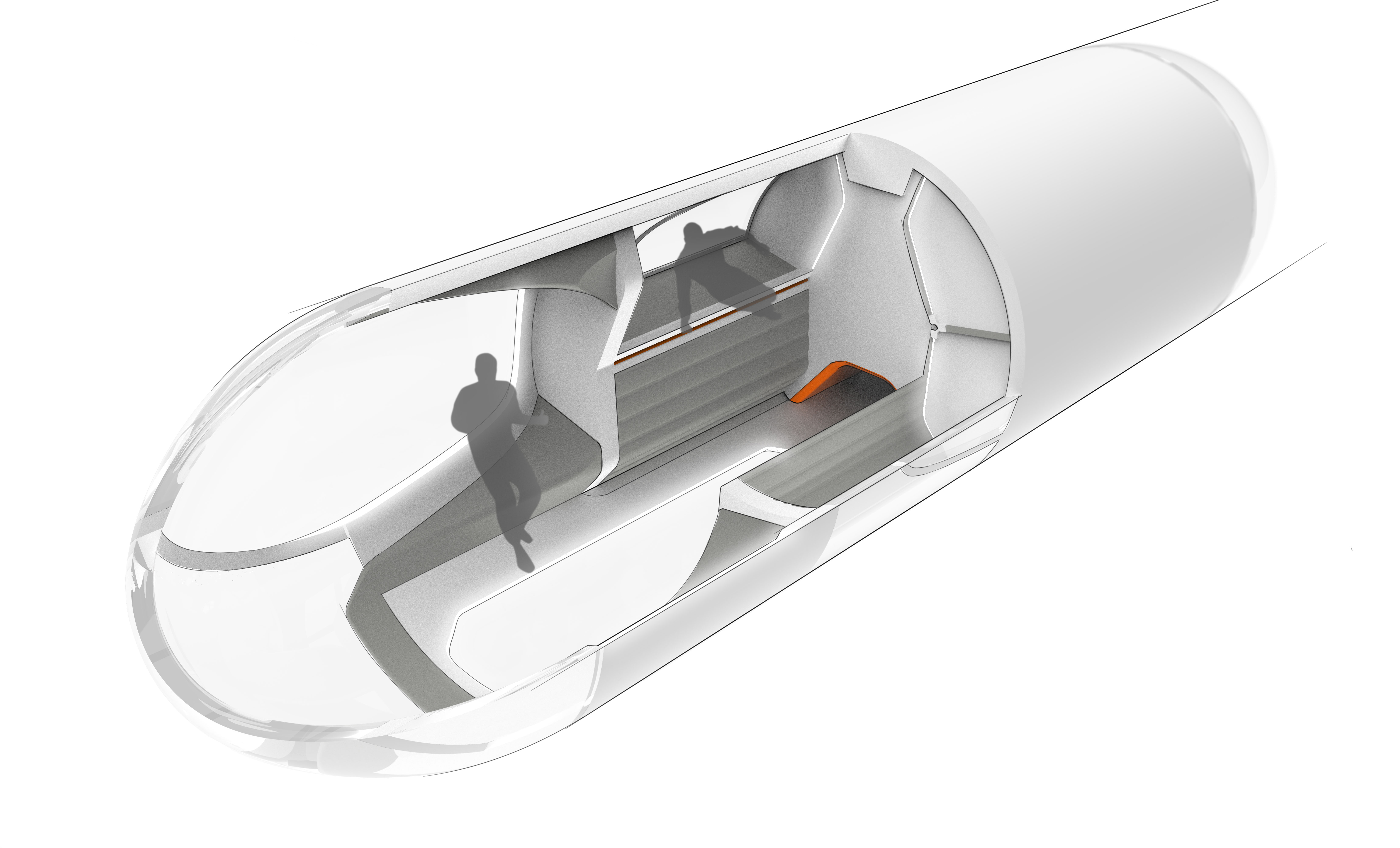
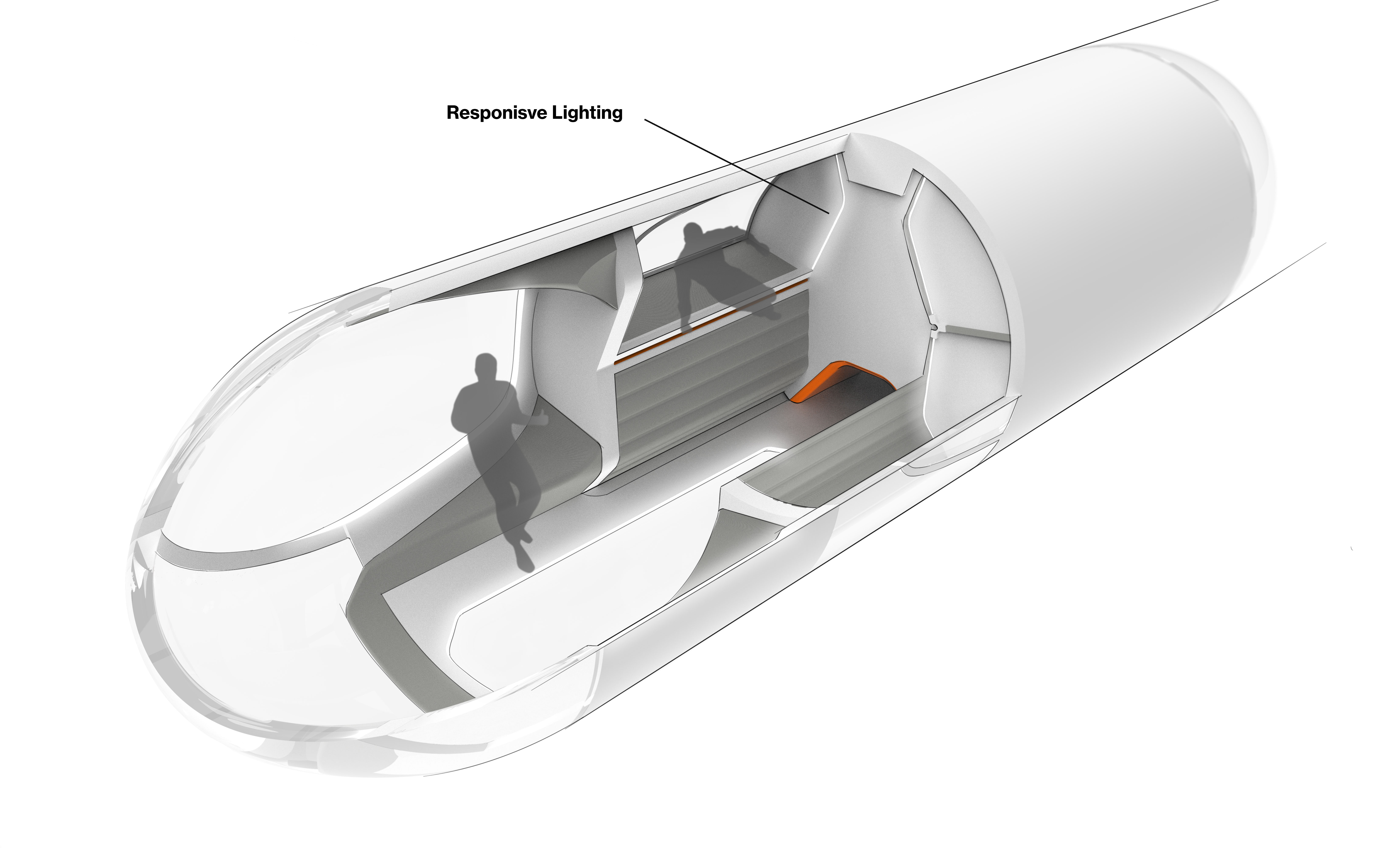
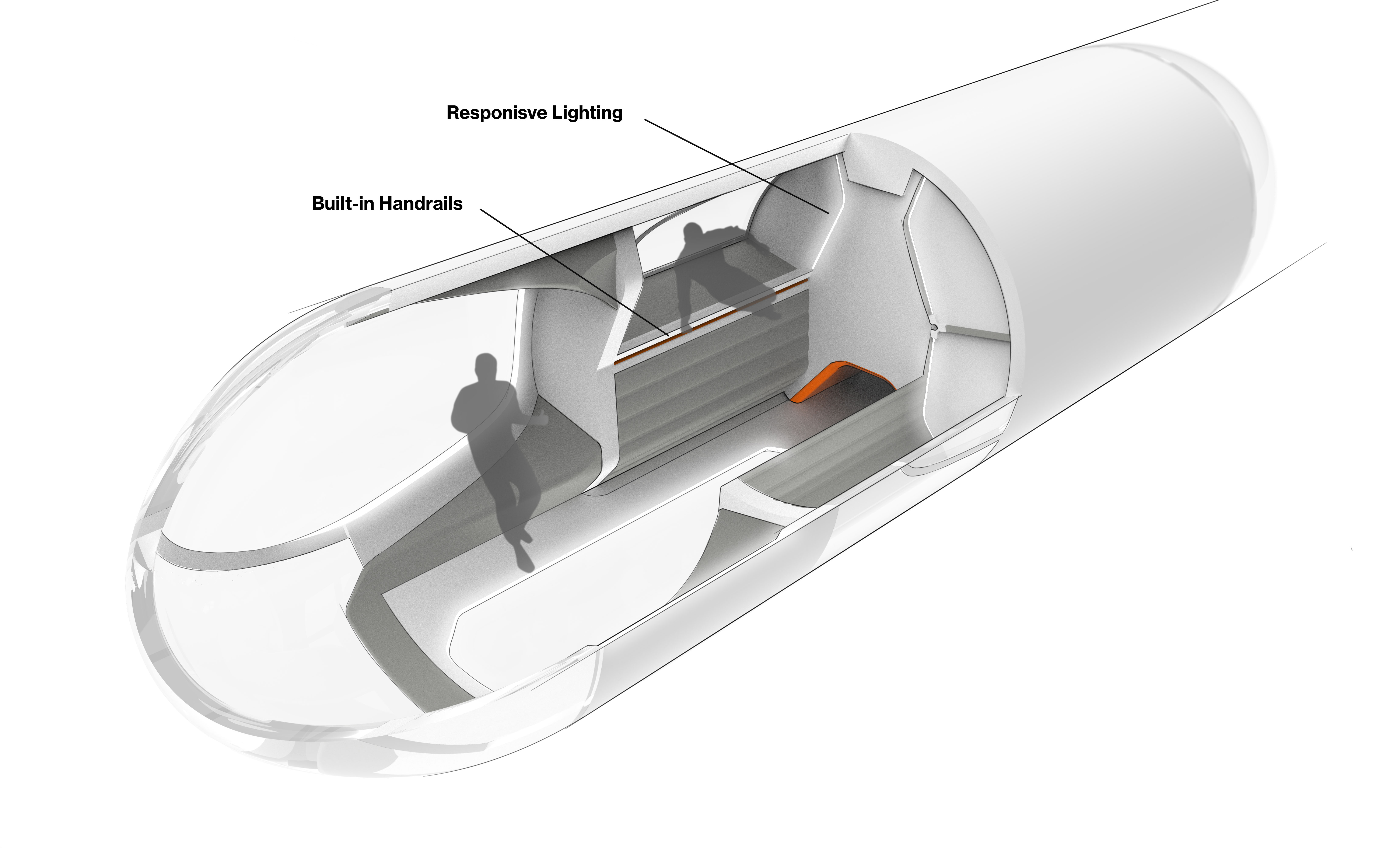
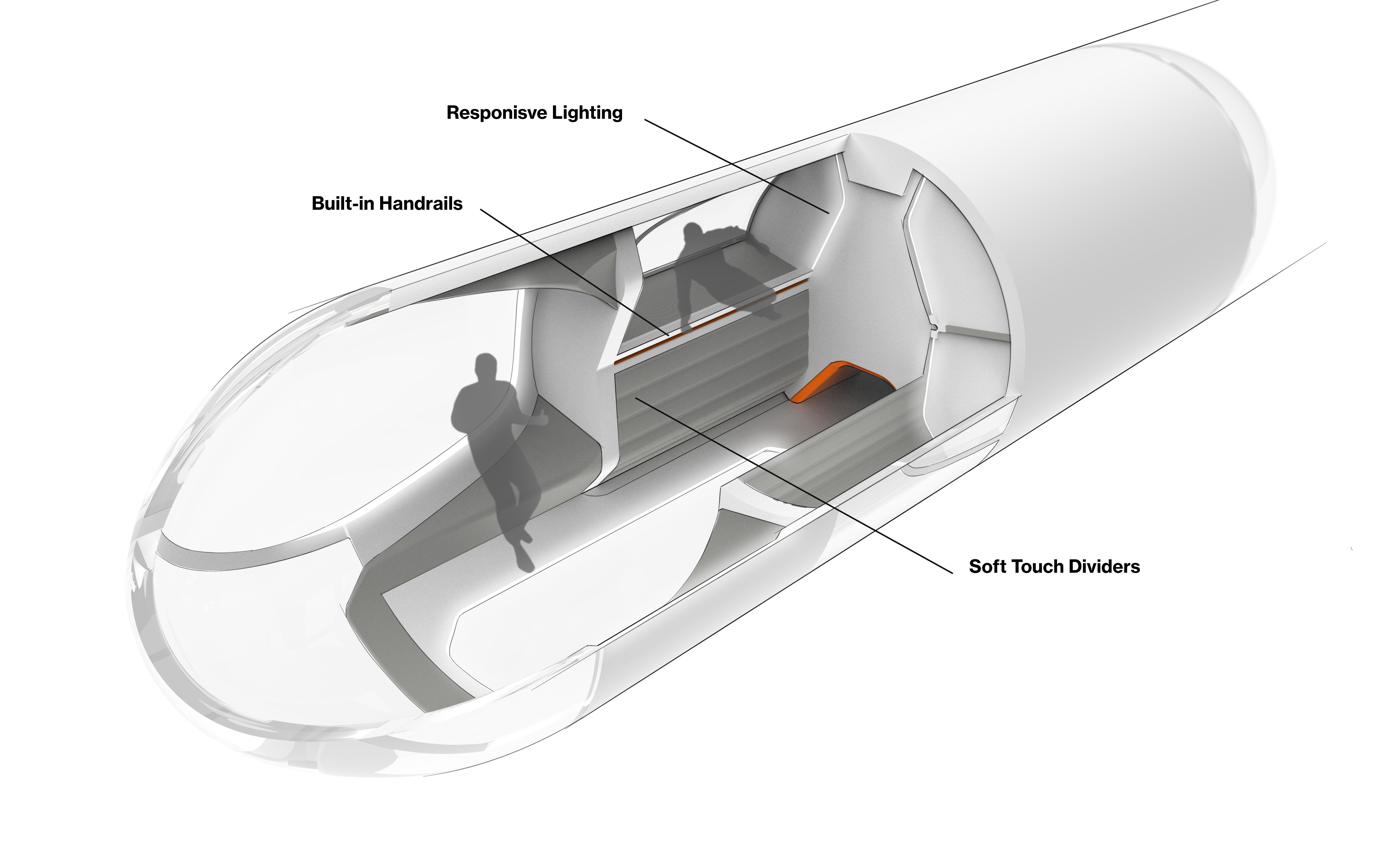
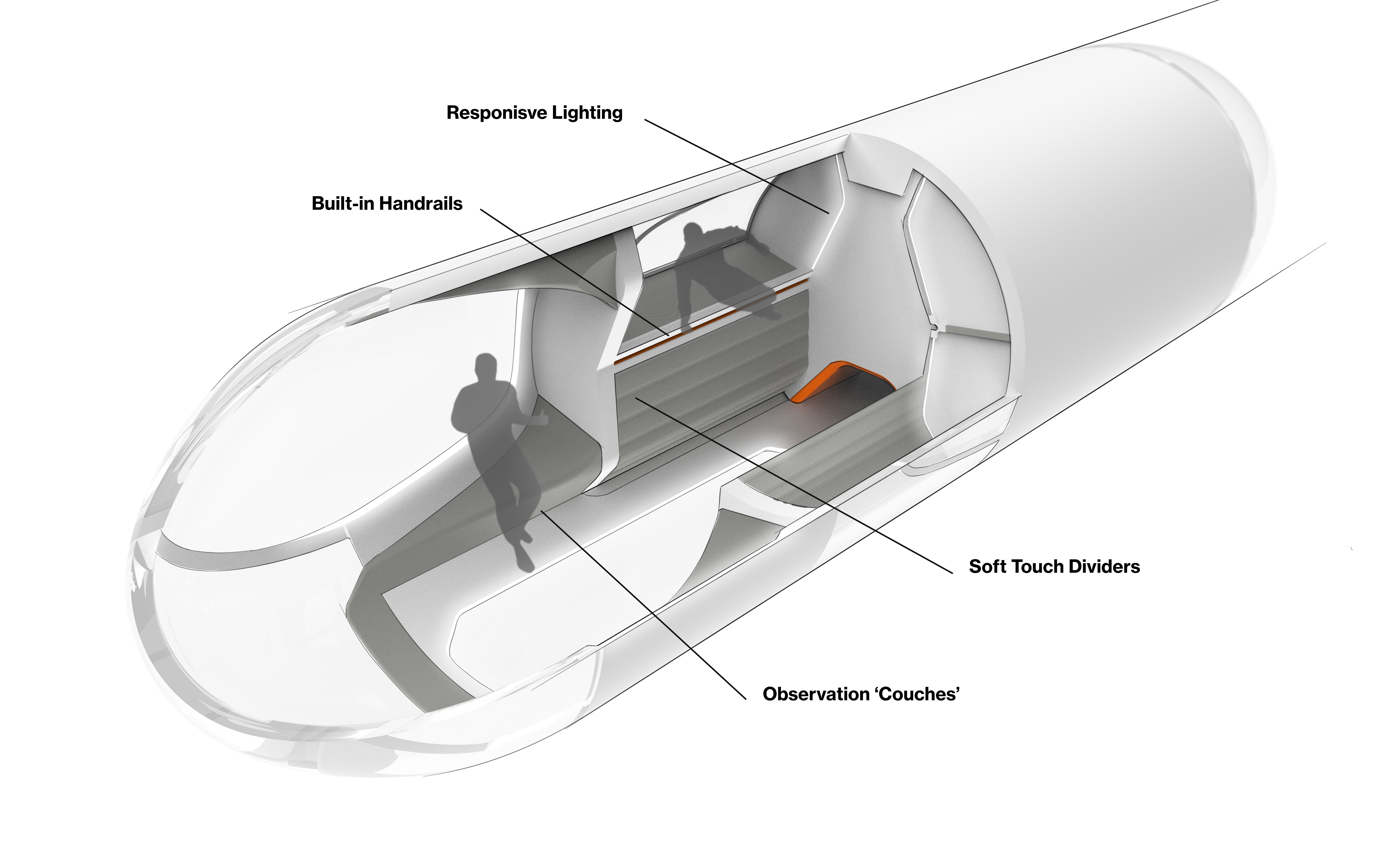





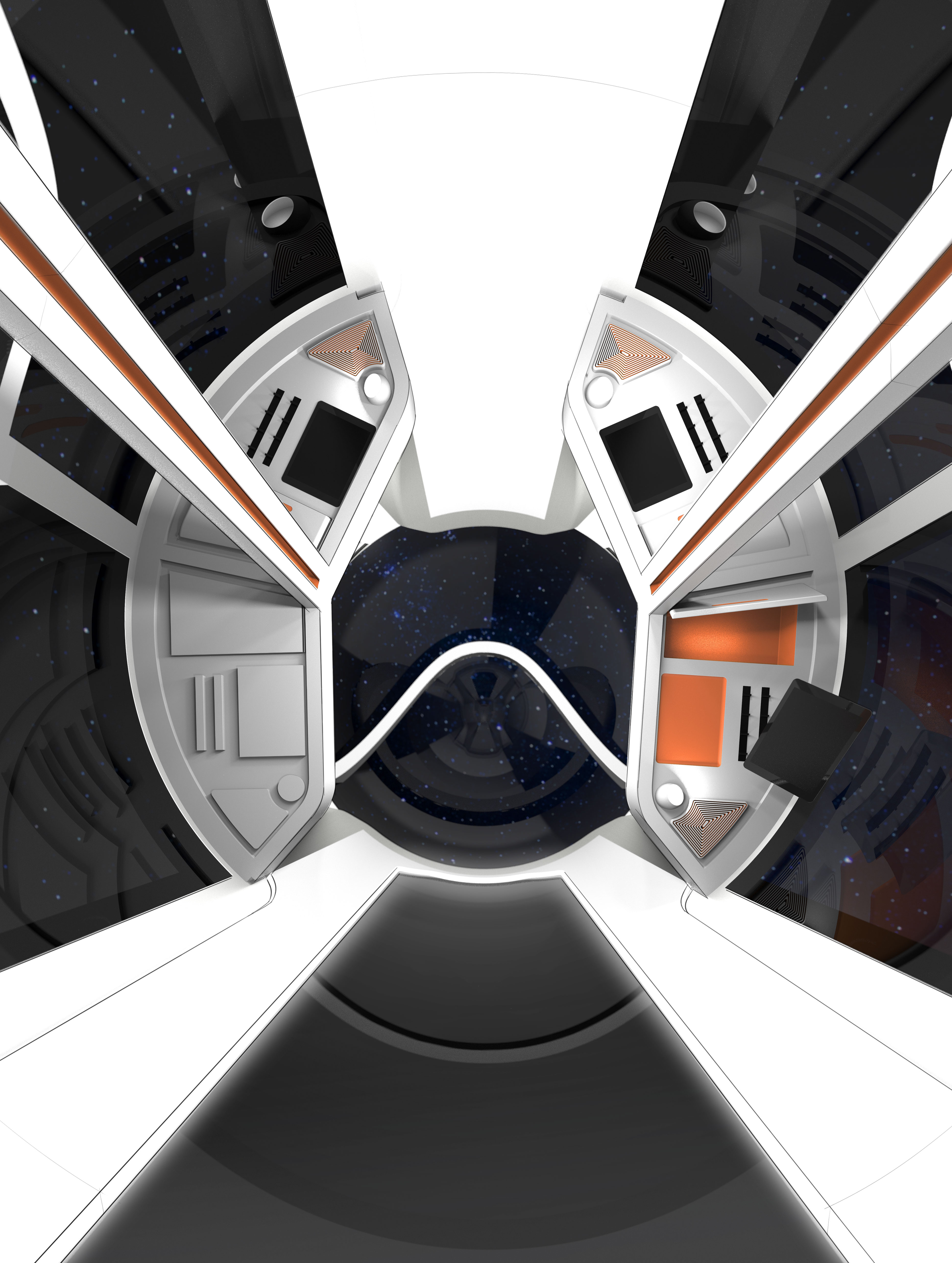
︎ work
Between the Lines
︎
Installation
Brief:
Between The Lines is an exhibit working to unpack the unspoken stigmas surrounding the female reproductive cycle from between the lines into candid, honest conversation. This exhibit informs and normalizes the stories surrounding periods and the struggles of those who menstruate.
Timeline:
4 months
Collaborators:
Dana Golan
Sam Spaeth
Sahm Lee
Between the Lines
︎
Installation
Brief:
Between The Lines is an exhibit working to unpack the unspoken stigmas surrounding the female reproductive cycle from between the lines into candid, honest conversation. This exhibit informs and normalizes the stories surrounding periods and the struggles of those who menstruate.
Timeline:
4 months
For those who menstruate and those who don’t
Collaborators:
Dana Golan
Sam Spaeth
Sahm Lee
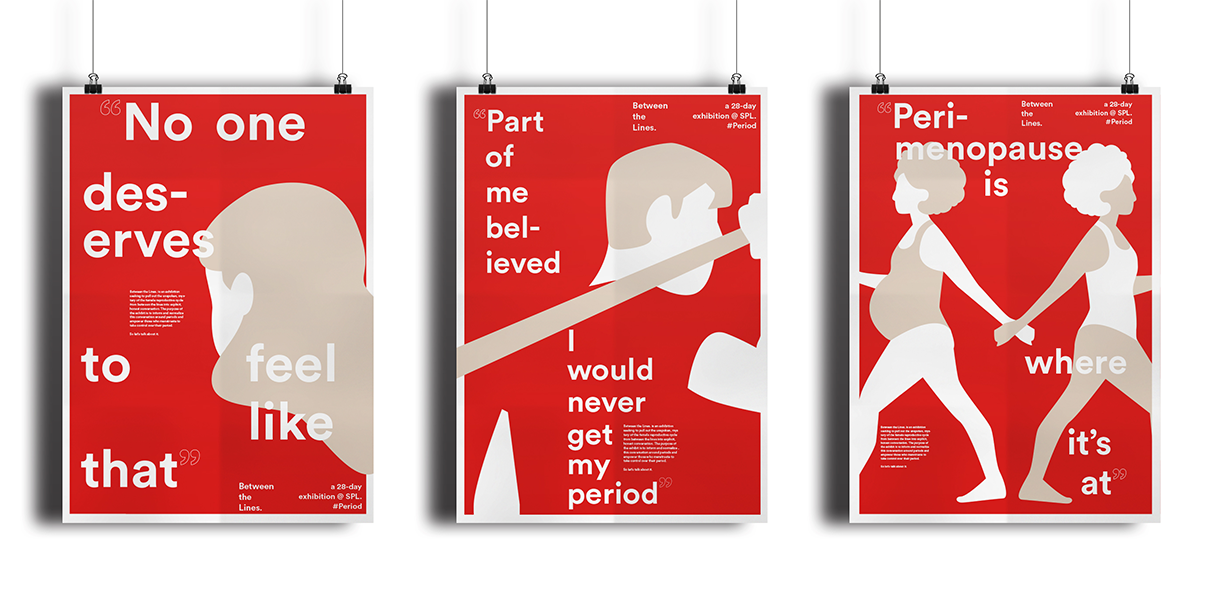
Prompt
Too many people who menstruate never fully learn about the processes their bodies go through while menstruating. The few lessons they recieve are loaded with stigma, shaming, and embarrassment. This lack of education and sober conversation perpetuates the repressive and fearful social perception of menstruation. The social implications of these mentalities create real-world problems for menstruators; physically, emotionally, and socially.
Solution
So let's talk about it.
Duration
A 28-day exhibition, a full cycleLocation
Seattle Public Library — 4th Floor “Red Hall”Audience
All ages, all genders, all people

Scope
While covering the basics about menstruation, our exhibtion also focuses on the hidden stories of what it means to live with a menstruating body.
︎
Access to Products
How laws and politics affect accessibility to menstrual products. Menstruation in prison or homeless.
︎
For All Who Bleed
The stories of trans and non-binary individuals who menstruate.
Access to Products
How laws and politics affect accessibility to menstrual products. Menstruation in prison or homeless.
︎
For All Who Bleed
The stories of trans and non-binary individuals who menstruate.
︎
Social Erasure
Stories from those that have no chance to speak. Real-life stories about menstrautaion. From mundane to unique.
︎
Period Changes
An honest talk about pregnancy, the end of menstruation, and menopause.
Social Erasure
Stories from those that have no chance to speak. Real-life stories about menstrautaion. From mundane to unique.
︎
Period Changes
An honest talk about pregnancy, the end of menstruation, and menopause.
︎
First Period
Welcome to the club.
Here’s what you need to know, from soneone who just went through it.
︎
Products, Waste, and Alternatives
Reckoning the effect of irresponsible manufacturing methods and chemical residuals in the environment and the body.
First Period
Welcome to the club.
Here’s what you need to know, from soneone who just went through it.
︎
Products, Waste, and Alternatives
Reckoning the effect of irresponsible manufacturing methods and chemical residuals in the environment and the body.
The Exhibit Space
The Seattle Public Library was our team’s choice due to the high potential of exposure for all people. Libraries act as an equalizer an a traditional symbol of the pursuit of understanding.


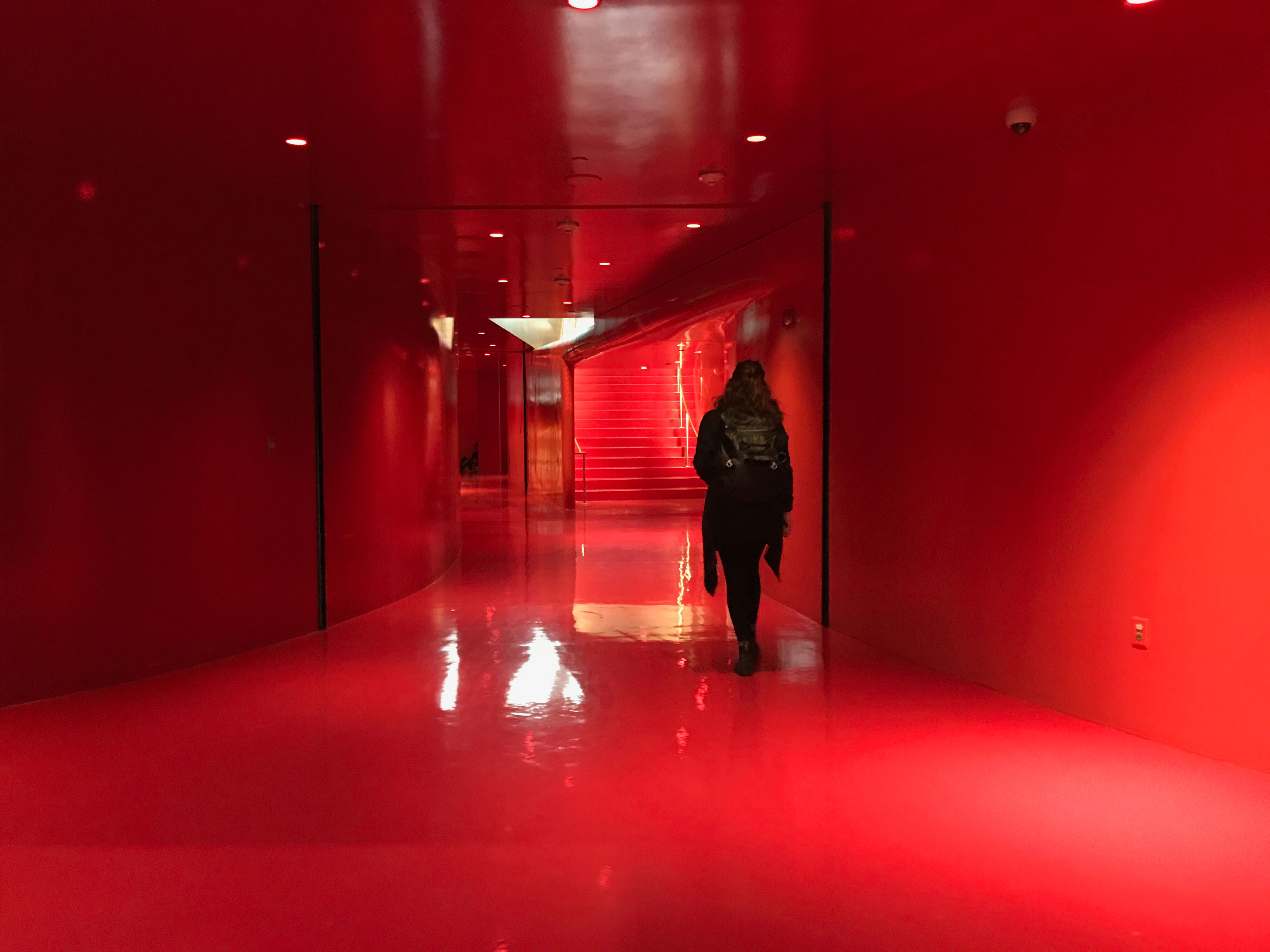
Wayfinding



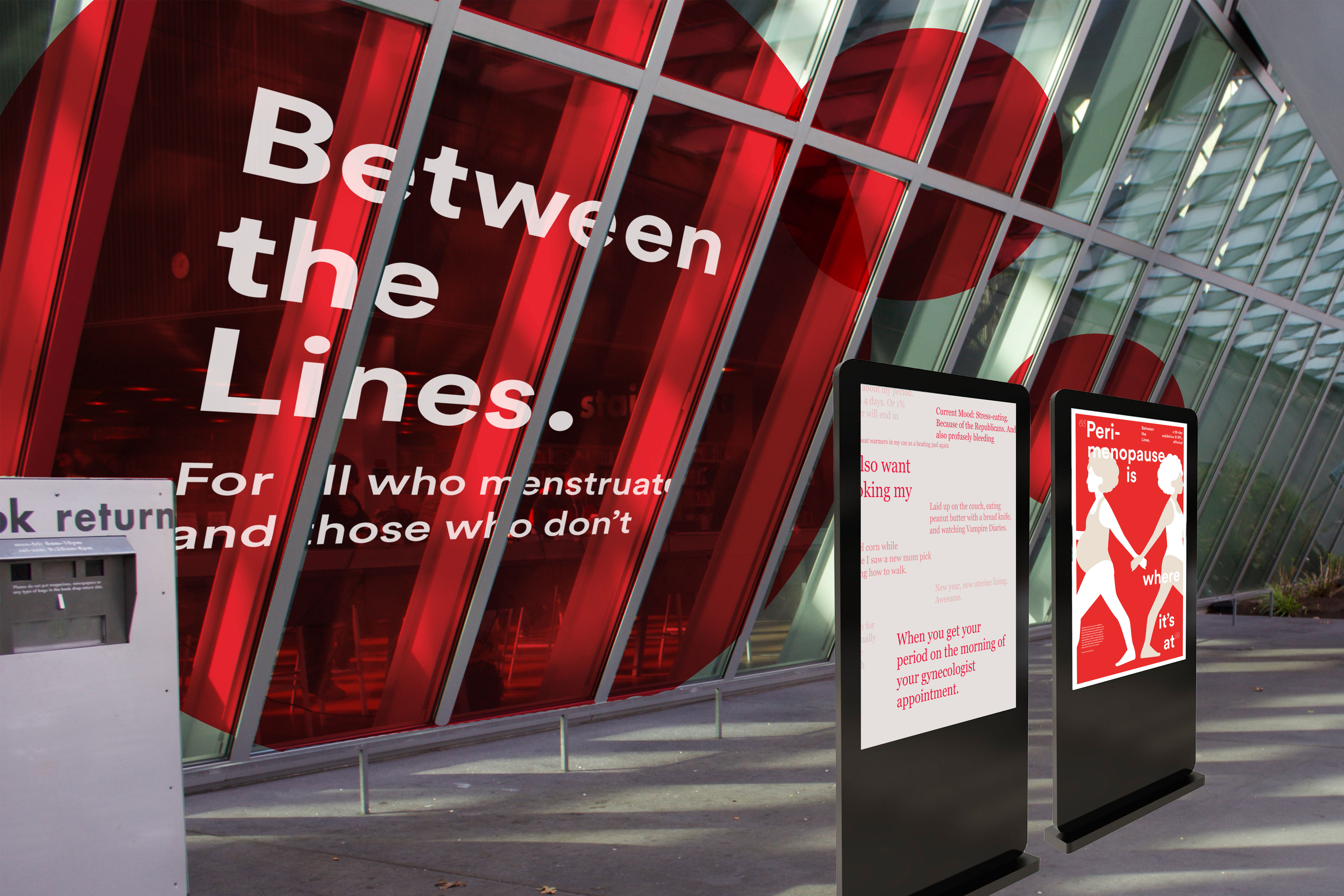
The Full Tour






